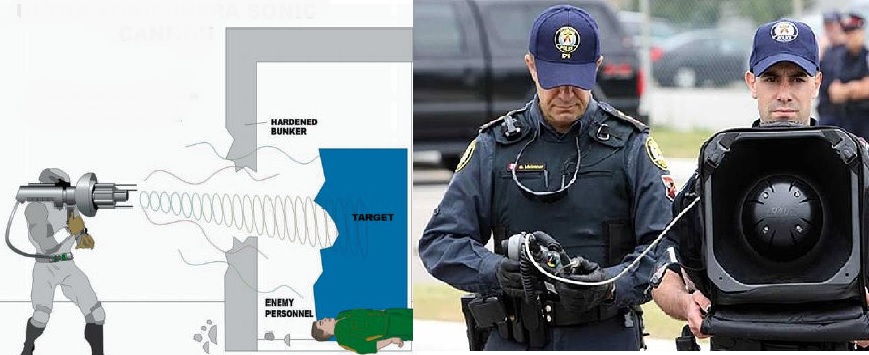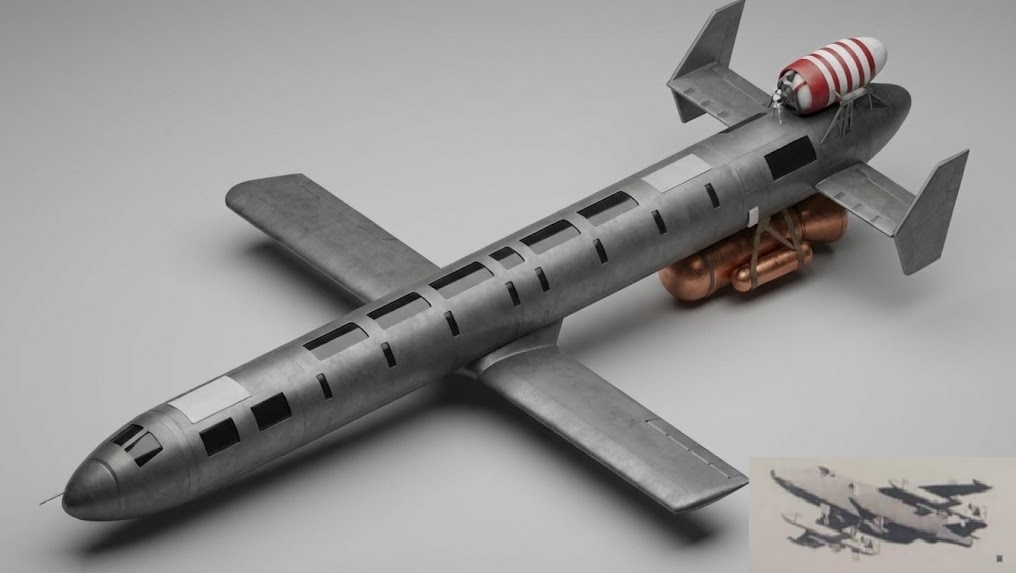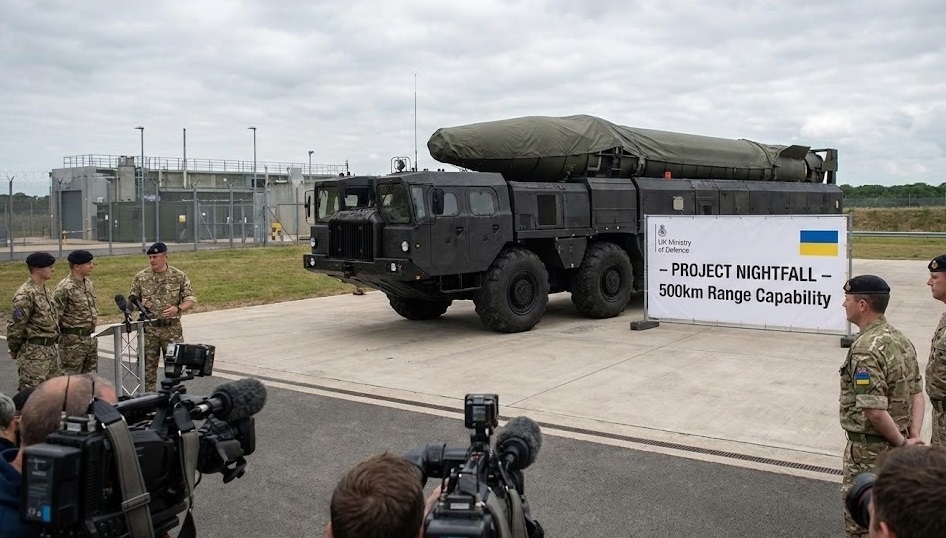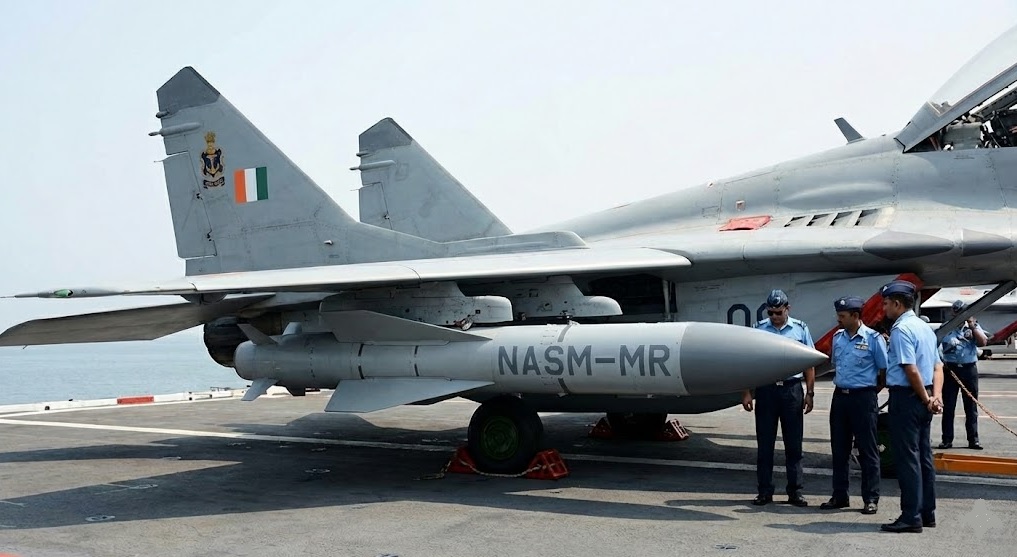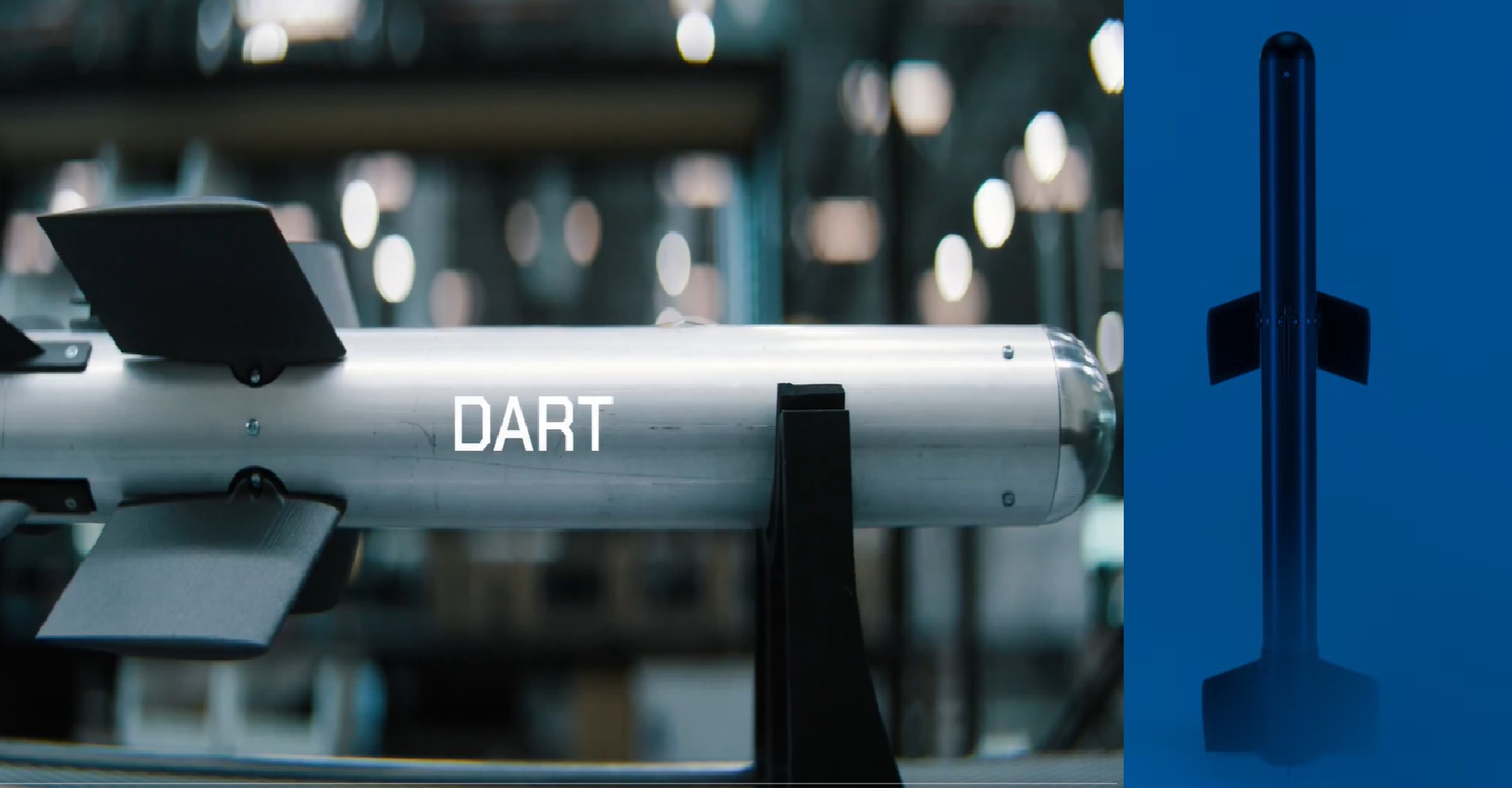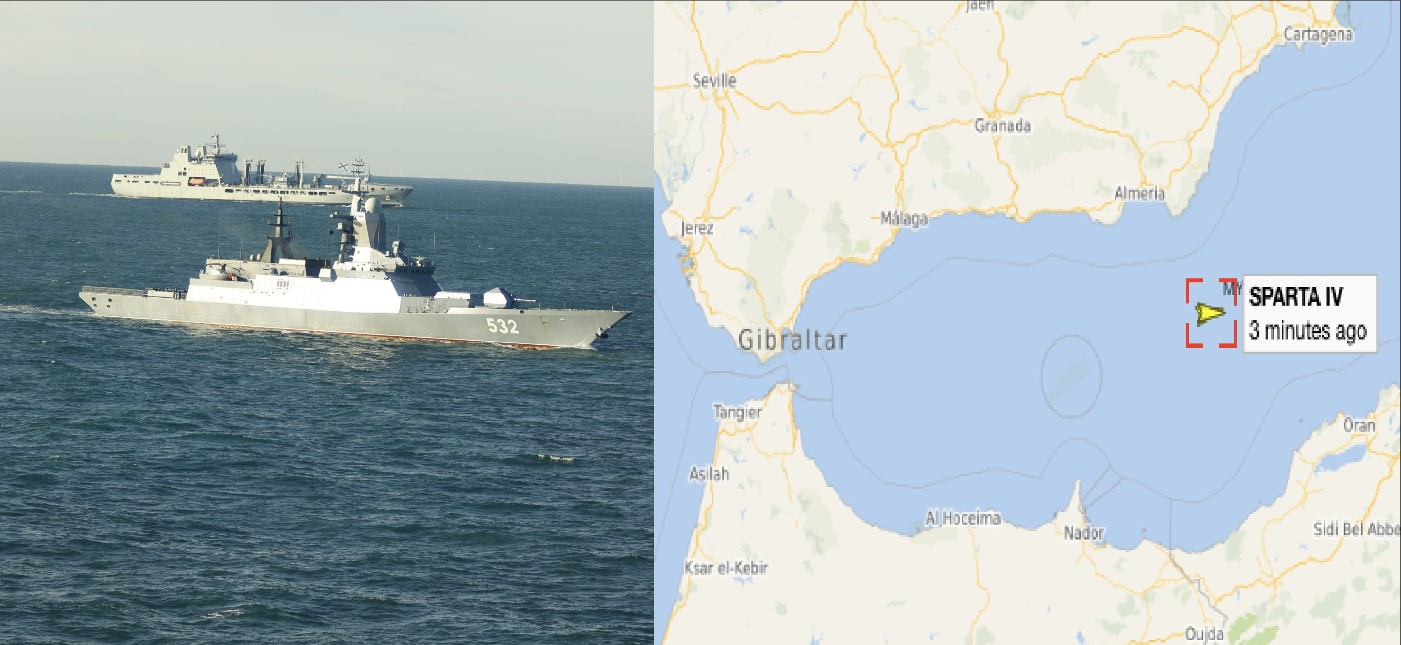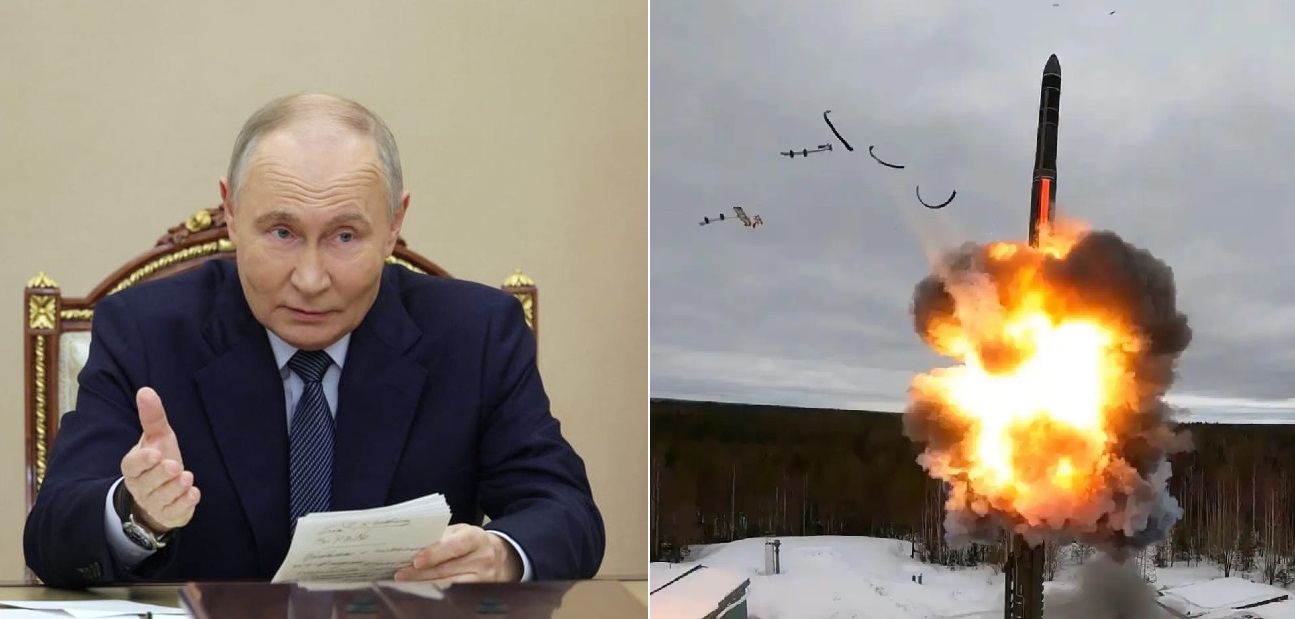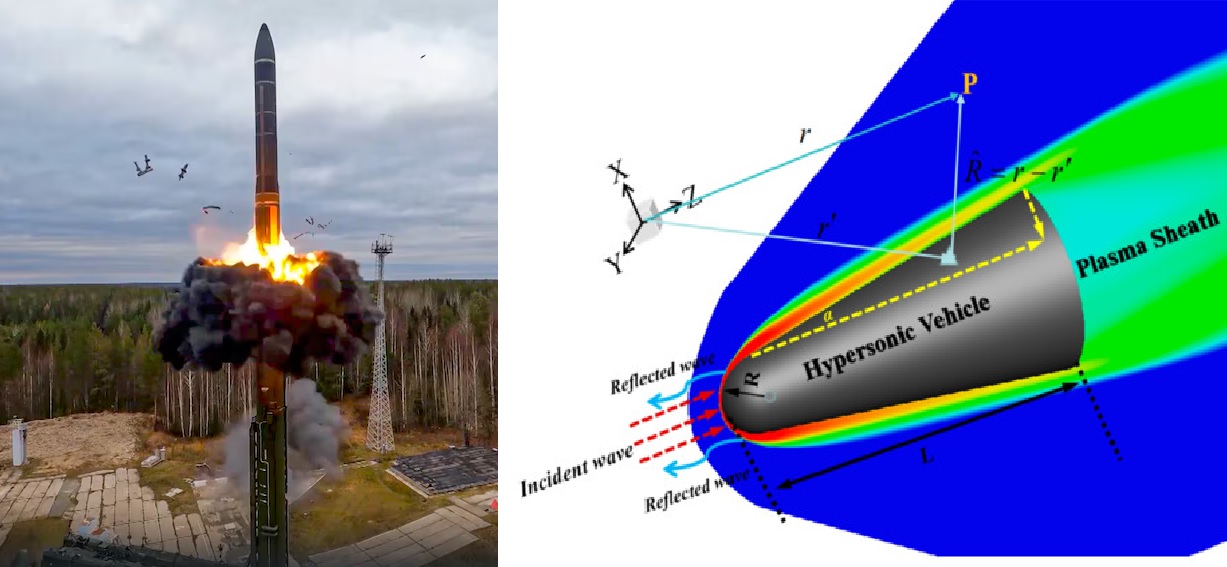Space & Technology
Tokyo : Dai Nippon Printing (DNP) says it has developed a Nanoimprint lithography (NIL) template capable of transferring 10-nanometer line patterns, a milestone the company is positioning for “1.4nm-generation” logic semiconductor manufacturing and as a potential way to reduce reliance on energy-hungry EUV steps in advanced chip production. The announcement, made in early December 2025 ahead of SEMICON Japan, lands as the semiconductor industry braces for another wave of scaling pressure—where the cost, power draw, and capacity constraints of extreme ultraviolet lithography (EUV) are becoming as strategic as the transistor architectures themselves. What DNP Has Developed — And Why 10 Nm Matters At the core of DNP’s update is a patterning template—the “stamp” in a stamping-style lithography flow. Instead of projecting light through complex optics (as in DUV/EUV), NIL physically presses a pre-formed pattern into a resist layer on the wafer, then cures it and transfers it through subsequent etch steps. DNP says its new template achieves 10 nm circuit line width and is intended to support patterning for logic semiconductors aligned with the 1.4nm class, even though modern node labels no longer map cleanly to a single physical dimension on the chip. To reach that resolution, DNP says it leveraged Self-Aligned Double Patterning (SADP)—a density-doubling technique widely used in advanced fabrication—applied here to the creation of the imprint template itself. The Energy Claim That’s Turning Heads DNP’s most attention-grabbing assertion is energy-related. The company says that, driven by its “energy-saving processing technology” using NIL, it can cut power consumption in the exposure process to approximately one-tenth compared with “currently available exposure processes,” including ArF immersion and EUV—depending on how the approach is deployed in a flow. That claim speaks directly to a real industry pain point: EUV’s light source and tool infrastructure are widely viewed as power intensive, and EUV scanners are also famously large and costly, reinforcing why chipmakers obsess over reducing the number of EUV layers and rework steps in a leading-edge process. Not A Full EUV Replacement — But A Strategic Alternative DNP is careful about scope. It says the 10 nm NIL template could replace a portion of the EUV lithography process, including for customers that do not have EUV processing capacity but still want access to advanced patterning options. Independent coverage has echoed the same framing: NIL is increasingly being pitched as a complementary patterning route for selected layers, not a wholesale swap for EUV across an entire 1.4nm-class logic flow. This distinction matters because logic manufacturing at the leading edge is dominated by tight overlay and defect requirements across many layers. NIL’s contact-based approach can be unforgiving: particles, template wear, and alignment stability can all turn into yield killers if not controlled at scale. Those risks—overlay, defects, and template durability—are long-recognized challenges for nanoimprint as it moves from specialty applications toward mainstream logic ambitions. Timeline: Evaluation In 2026, Production Targeted For 2027 DNP says it has begun evaluation work with semiconductor manufacturers and is aiming to start mass production in 2027, while expanding capacity to match demand. Commercially, the company has put a number on its ambition: DNP is targeting ¥4 billion in NIL-related sales by FY2030. The company also planned to show the new 10 nm template at SEMICON Japan 2025 (Dec. 17–19) at Tokyo Big Sight, signaling that it wants early ecosystem feedback and toolchain discussions to start immediately. Why Japan’s Nanoimprint Push Is Gaining Momentum DNP is not alone in pushing imprint back into the spotlight. Canon has been developing nanoimprint lithography tools for years and has already commercialized a 300mm NIL system that patterns by pressing a mask into resist “like a stamp,” explicitly emphasizing reduced power consumption and lower cost versus conventional optical exposure approaches. Meanwhile, leading foundries are planning their 1.4nm-class eras on aggressive timelines—typically still EUV-heavy—while debating when, and whether, to transition to next-generation “High-NA” EUV tools. The backdrop creates an opening for technologies that can meaningfully reduce EUV tool count, EUV layer usage, or the overall exposure burden without forcing a full redesign of manufacturing lines. The Remaining Challenges: Defects, Overlay, And Durability For NIL to earn a place in advanced logic manufacturing, the industry’s questions are likely to be brutally practical. First is defectivity control. NIL transfers patterns through physical contact; any contaminant can imprint directly into resist and propagate through etch, threatening yield. Second is overlay—the ability to align each layer to the one beneath it with nanometer-level accuracy across a full 300mm wafer. Third is template durability and repeatability: high-volume fabs cannot afford frequent template degradation, slow inspection cycles, or costly master replacements. These are exactly the issues that have historically kept NIL from taking over the most critical logic layers, even as the technique proved itself in other markets. DNP’s 10 nm template achievement does not automatically solve those problems—but it does raise the stakes of the conversation. With evaluation programs underway and a 2027 manufacturing target, the next 12–24 months will likely determine whether NIL becomes a niche assist technology, a serious EUV load-reducer in select layers, or another promising approach that struggles under the realities of high-volume leading-edge production.
Read More → Posted on 2026-01-11 18:13:43World
Europe / Washington : The European Union is preparing a wide-ranging retaliation strategy that could directly affect major American technology companies, banks and financial institutions if the United States refuses to withdraw its renewed claims over Greenland, according to officials and media reports familiar with the matter. The move highlights a sharp escalation in transatlantic tensions, as European leaders close ranks behind Denmark and Greenland’s autonomous government, warning that any challenge to the island’s status would violate international law, undermine the NATO alliance, and create a destabilizing geopolitical precedent. Sanctions Blueprint Under Discussion According to diplomatic sources, Brussels is examining a sanctions-style response designed to target sectors where the EU holds substantial leverage over the US economy. These include potential restrictions on the activities of American technology giants such as Google, Microsoft and X, along with possible limits on the operations of US banks and financial firms within the EU’s single market. Officials stress that no measures have yet been formally approved. Instead, the proposals are being developed as a contingency plan, intended for use only if Washington continues to apply pressure on Copenhagen or escalates its stance on Greenland’s future. Extreme Options Floated Behind Closed Doors In addition to economic tools, officials acknowledge that more extreme measures have been mentioned in informal political discussions. Among them is the idea of reassessing the presence of US military bases in Europe, including calls—described as highly unlikely and politically explosive—to expel American forces from certain European facilities. Such actions would mark an unprecedented fracture within NATO, where US military deployments have long been viewed as central to European security. EU officials emphasize that these ideas remain theoretical and are not part of any formal policy planning. Europe Closes Ranks Around Denmark And Greenland Publicly, the EU has emphasized unity and diplomacy rather than confrontation. European leaders have repeatedly stated that Greenland’s sovereignty is not negotiable, insisting that decisions about the island’s future belong exclusively to its people and to Denmark. Denmark has sought to reinforce this position by announcing increased Arctic defense spending and expanded cooperation with allies, while firmly rejecting any discussion of transferring sovereignty. Why Greenland Matters Greenland’s strategic importance is rooted in its geographic location, military relevance and natural resources. Positioned between North America and Europe, the island plays a crucial role in missile early-warning systems, Arctic surveillance and emerging shipping routes, while also possessing reserves of critical minerals vital for advanced technologies. As global competition intensifies in the Arctic, Greenland has become a focal point in the broader struggle for strategic influence in the region. EU officials insist that sanctions remain a last resort, with diplomacy still the preferred course. However, the development of a retaliation framework sends a clear message that Brussels is prepared to defend the territorial integrity of a member state and its partners, even at the cost of heightened economic confrontation with Washington. As one European diplomat remarked, “This is not only about Greenland. It is about whether alliances are governed by law and consent, or by pressure and power.”
Read More → Posted on 2026-01-11 18:04:30World
Caracas / Washington : Venezuelan soldiers and security personnel loyal to President Nicolás Maduro have described a harrowing encounter with what they believe was a U.S. directed-energy or sonic weapon during a covert special operations raid, an incident that allegedly left troops bleeding internally, vomiting blood and physically unable to move. The claims, first reported by the New York Post, center on a secret operation in which a small, technologically advanced U.S. unit reportedly attempted to capture the Venezuelan leader. Although the United States has neither confirmed nor denied the operation, the vivid and technically consistent testimonies have triggered renewed scrutiny of classified acoustic and directed-energy weapons. Radar Blackout, Drone Swarms and a Small Assault Force According to a Venezuelan security guard interviewed about the operation, the attack began without warning. Radar systems and electronic surveillance reportedly shut down simultaneously, leaving defenders blind. “We didn’t hear anything coming,” the guard said. “We were on alert, but suddenly all our radar systems shut down without any explanation.” Moments later, a large number of drones appeared over Venezuelan positions, followed by approximately eight helicopters. From those aircraft, the guard estimated around twenty soldiers deployed — a remarkably small force compared with the hundreds of Venezuelan troops present at the site. Despite their numerical disadvantage, the attackers were described as “technologically very advanced,” moving and firing with extraordinary speed and accuracy. The guard claimed each operator appeared capable of firing up to 300 rounds per minute, overwhelming defenders before they could mount an effective response. “It Felt Like My Head Was Exploding From the Inside” The most disturbing accounts emerged when soldiers described the moment a previously unseen weapon was activated. “At one point, they launched something; I don’t know how to describe it,” the guard said. “It was like a very intense sound wave. Suddenly I felt like my head was exploding from the inside.” Multiple soldiers reported immediate and severe physical reactions. Nosebleeds began almost instantly. Several said they started vomiting blood. Others collapsed to the ground, unable to stand, walk or even maintain balance. “We all started bleeding from the nose,” another soldier recalled. “Some were vomiting blood. We fell to the ground, unable to move. We couldn’t even stand up after that sonic weapon, or whatever it was.” The soldiers insisted the assault team suffered no casualties, while Venezuelan forces sustained hundreds of deaths, an outcome they attributed not only to gunfire but to the incapacitating effects of the unknown weapon. Analysis: Infrasonic Pulse and Resonance Effects Weapons specialists examining the accounts say the symptoms align closely with exposure to a high-powered infrasonic or shockwave-based directed-energy system. Infrasound consists of low-frequency sound waves below 20 hertz, far beneath the range of human hearing. Unlike conventional sound, infrasound does not primarily affect the eardrum. Instead, it vibrates the gases and liquids inside the human body, passing through walls, armor and tissue with minimal energy loss. Medical research shows that every human organ has a natural resonant frequency. The human skull and brain resonate between 70 and 80 hertz, while the eyes resonate around 18 hertz. Lower frequencies in the 4–8 hertz range can align with the resonant frequencies of the lungs and stomach. If a weapon projects extremely high-decibel waves — estimated at 170 decibels or higher — at or near these frequencies, organs can be forced into violent oscillation. This resonance can produce the sensation of internal pressure or expansion, explaining soldiers’ descriptions of their heads “exploding” from the inside. Why Soldiers Were Bleeding and Vomiting Blood The reported nosebleeds, known medically as epistaxis, indicate barotrauma — injury caused by sudden pressure changes. High-intensity acoustic waves generate rapid pressure fluctuations similar to a blast wave, rupturing delicate capillaries in the nasal cavity and sinuses almost instantly. More alarming are reports of vomiting blood, which suggest internal hemorrhaging. Low-frequency acoustic energy can cause lung tissue to slam repeatedly against the rib cage, leading to pulmonary contusions or micro-tears. Similar forces acting on the stomach lining can result in gastrointestinal bleeding. Soldiers also described being unable to stand or move, a classic symptom of severe vestibular disruption. The inner ear’s fluid-filled balance system is highly sensitive to pressure and vibration. Intense acoustic exposure can induce extreme vertigo, rendering victims temporarily or permanently incapacitated without visible external injuries. Analysis of Potential Technologies Behind Alleged Acoustic Attacks While the accounts from Venezuelan security personnel remain unverified, defense analysts note that the described effects correlate with specific technologies currently present in U.S. and allied military research programs. The alleged weapon likely draws upon principles found in three distinct categories of existing systems. 1. Long Range Acoustic Device (LRAD) The LRAD is an established system currently deployed by the U.S. Navy and domestic law enforcement. Capabilities: It projects a highly focused beam of sound, capable of delivering intense, piercing noise over significant distances. Limitations: Standard models are designed for communication, crowd control, and pain compliance. They are not engineered to cause internal organ damage or hemorrhaging. Assessment: Analysts suggest that if an LRAD-based system was used, it would represent a highly militarized, lethal evolution of the technology that far exceeds publicly acknowledged capabilities. 2. "Thunder Generator" Shockwave Systems The technology most closely aligned with the reported physical injuries is the experimental "Thunder Generator," developed in U.S. and Israeli defense programs. Mechanism: Unlike traditional acoustic weapons, these devices generate rapid, repetitive shockwaves that create the sensation of being struck by a physical wall of compressed air. Physical Effects: The sustained air-pressure impacts can cause barotrauma (pressure injuries), internal bleeding, and loss of balance without the use of explosives. Assessment: This mechanism closely matches the specific reports of nosebleeds, internal hemorrhaging, and sudden incapacitation described by the soldiers. Based on the combination of symptoms—auditory distress, cranial pressure, and internal trauma—specialists suggest the alleged weapon is likely not a single known system. Instead, it appears to be a hybrid or advanced form of shockwave-based directed-energy technology. This hypothetical system would combine acoustic pressure, resonance effects, and air-compression forces to achieve the reported lethality. Regional Impact and Strategic Warning Beyond the immediate allegations, the incident has reportedly sent shockwaves across Latin America, prompting renewed discussion among regional governments and security analysts about the evolving nature of U.S. military capabilities and emerging forms of warfare. Venezuelan security personnel involved in the incident said the operation has altered perceptions of modern conflict, particularly the role of advanced technologies that can incapacitate forces without prolonged engagements or conventional large-scale troop deployments. Officials in Venezuela have not released a detailed public assessment of the alleged operation, and Washington has remained silent on the claims. Nonetheless, the accounts have intensified debate over the quiet militarization of directed-energy technologies and the increasingly blurred line between so-called non-lethal systems and weapons capable of causing severe or potentially fatal injuries. If accurate, the alleged raid would represent one of the clearest reported battlefield uses of such technology to date, underscoring a broader shift in modern warfare — away from visible firepower and toward invisible forces that act directly on the human body, often leaving little immediate physical evidence.
Read More → Posted on 2026-01-11 17:50:45World
EUROPE / U.S : Recent attention has focused on remarks attributed to former U.S. president Donald Trump, who was quoted as saying “NATO is zero without America.” The comment was followed by a purported response attributed to Italian Prime Minister Giorgia Meloni, suggesting that Europe could respond by closing U.S. military bases, restricting transatlantic trade, or targeting American commercial interests. The exchange has been widely presented as a direct political confrontation between the two leaders. A closer examination, however, reveals an important distinction between verified statements and fabricated attributions. While Trump’s remarks align with his longstanding criticism of the North Atlantic Treaty Organization (NATO), the statement attributed to Meloni does not appear in any verified speech, interview, parliamentary record, or official government communication. Instead, the wording reflects an unattributed commentary rather than a confirmed position expressed by the Italian prime minister. Despite the lack of confirmation, the episode has drawn attention because it underscores a substantive strategic debate. At its core lies the balance of power within NATO, Europe’s reliance on American military capabilities, and the degree of leverage European states theoretically hold by hosting a significant portion of the U.S. military’s forward-deployed infrastructure. These factors remain central to transatlantic security relations, regardless of how the debate is framed or attributed. Trump’s NATO Message, And The Pressure Campaign Behind It Trump has repeatedly framed NATO as an imbalanced deal in which the United States carries the burden. That posture has sharpened European anxiety about whether Washington could reduce its force presence, especially as U.S. officials have publicly signaled that troop levels in Europe are ultimately a presidential decision. Those nerves have not been abstract. Reporting over the past year has focused on adjustments to deployments on NATO’s eastern flank, including reductions in Romania that allies and analysts read as politically significant, even when the Pentagon emphasizes that the broader U.S. presence remains above pre-2022 levels. How Big is The U.S Basing Footprint in Europe? Assessing the size of the U.S. military basing footprint in Europe depends heavily on how a “base” is defined. Analysts and governments distinguish between major permanent installations, persistent access sites, and a wider network of smaller facilities used for storage, communications, training, and contingency operations. As of early 2025, the United States maintains a broad and layered military infrastructure across Europe, designed to support NATO operations, deterrence on the eastern flank, and power projection into the Middle East and Africa. Publicly available assessments indicate that the U.S. operates 31 persistent bases and 18 additional significant access sites across Europe. When smaller facilities — including logistics depots, “lily pad” contingency locations, and communications and intelligence stations — are included, the overall network exceeds 80 separate military sites across the continent. This discrepancy reflects the Pentagon’s accounting method. The Congressional Research Service (CRS) explains that the Department of Defense’s Base Structure Report (BSR) counts individual parcels of infrastructure as separate “sites,” even when they belong to a single base complex. As a result, one installation can appear multiple times in official tallies — a method that significantly inflates site numbers without changing the underlying footprint. What is not disputed is the scale of personnel supported by this infrastructure. As of early 2025, approximately 84,000 U.S. service members are stationed in Europe. This figure includes around 20,000 additional troops deployed after Russia’s 2022 invasion of Ukraine, reinforcing NATO’s eastern flank and expanding rotational forces in Central and Eastern Europe. While troop numbers fluctuate due to rotations, exercises, and temporary deployments, U.S. force levels remain well above pre-2022 baselines, underscoring Europe’s continued role as the primary forward operating theater for American forces outside the Indo-Pacific. The U.S. military presence in Europe is heavily concentrated in a small number of allied countries, with Germany, Italy, and the United Kingdom forming the core of America’s regional posture. Germany, hosting roughly 35,000 U.S. personnel, functions as the primary logistics and command hub. It contains the largest concentration of U.S. facilities in Europe — estimates range from 40 to more than 100 sites, depending on classification. Major installations include Ramstein Air Base, the largest U.S. air base overseas; USAG Stuttgart, home to U.S. European Command (EUCOM); USAG Bavaria; and Spangdahlem Air Base. Italy, with approximately 13,000 U.S. personnel, serves as the Mediterranean hub for American operations. The country hosts between 7 and 12 major installations, including Aviano Air Base, Naval Air Station Sigonella, and Naval Support Activity Naples, which supports the U.S. Sixth Fleet. The United Kingdom, with around 10,000 U.S. troops, is primarily an air power hub. Facilities such as RAF Lakenheath, home to U.S. F-35 fighter squadrons, and RAF Mildenhall support long-range strike, refueling, and intelligence missions. Spain hosts 3,200 to 4,000 U.S. personnel, centered on Naval Station Rota, a critical naval logistics hub that supports U.S. Aegis-equipped destroyers operating in both the Mediterranean and Atlantic. On NATO’s eastern flank, Poland has emerged as a growing focal point. While most forces remain rotational, the U.S. recently established its first permanent Army base in the country at Camp Kościuszko in Poznań, reflecting Poland’s expanding role in regional defense planning. Turkey, hosting roughly 1,700 U.S. personnel, retains strategic importance through Incirlik Air Base, which provides access to the Middle East despite periodic political friction. Other countries hosting smaller but strategically significant U.S. sites include Belgium, The Netherlands, Greece (notably Souda Bay), and Romania, which hosts an Aegis Ashore missile defense site. Taken together, the U.S. basing network in Europe represents not a single monolithic structure, but a distributed system designed for rapid reinforcement, deterrence, and flexible response. While debates continue over burden-sharing and future troop levels, the physical scale of America’s European footprint remains one of the most consequential — and irreplaceable — pillars of transatlantic security. Italy’s Role: Why U.S Bases There Matter Italy sits at the center of the U.S. Mediterranean map: close to the Balkans, North Africa, the Levant, and Black Sea approaches. CRS describes key functions hosted in Italy, including U.S. Army headquarters elements in Vicenza and combat air assets at Aviano. Among the best-known U.S. facilities in Italy are Aviano Air Base, Naval Air Station Sigonella, and U.S. Navy hubs around Naples (including support sites), all of which appear in congressional basing discussions and compilations of U.S. overseas posture. Even when the viral “Meloni” line is treated as fiction, it lands because it points at a real vulnerability: host nations can impose political and legal constraints, slow-roll permissions, or in extreme scenarios demand closures — and the U.S. cannot fully substitute Europe’s geography with a memo from Washington. The “Shut Down Your Bases” Scenario: What It Would Do to U.S Power If Europe collectively moved to restrict or close U.S. bases — an extreme and currently unrealistic political step — the effects would likely cascade across four fronts. First, it would hit speed and reach. Forward-based aircraft, logistics nodes, and maintenance hubs drastically shorten response times to crises in Europe’s neighborhood, from the Mediterranean to the Middle East and Africa. Removing them would force the U.S. to rely more on long-range deployments from the continental United States or on fewer alternative hubs, raising costs and stretching readiness. Second, it would degrade deterrence. NATO’s conventional posture relies not just on troop numbers but on “enablers” the U.S. brings at scale — airlift, intelligence and surveillance, command-and-control, missile defense integration, and rapid reinforcement. European militaries are expanding capabilities, but analysts and policymakers widely describe the replacement task as difficult and slow. Third, it would complicate ongoing operational commitments. Europe hosts rotational training and staging routes that support broader U.S. operations, and it underpins reinforcement plans for NATO’s eastern flank. A basing shock would force urgent renegotiation of access and overflight arrangements and would likely create gaps during any transition. Fourth, it would reshape U.S. politics and budgeting. Relocating infrastructure is expensive; rebuilding comparable capacity elsewhere would require multi-year military construction, new host-nation agreements, and likely bruising congressional fights over where units should go. The immediate “win” of closing overseas facilities could quickly collide with the practical costs of maintaining the same global posture from farther away. The “Cut Trade” Angle: the Economic Punch is Real The other half of the meme’s threat — “cut trade” — also resonates because transatlantic commerce is enormous. EU figures put total EU–U.S. trade in goods and services in 2024 at over €1.68 trillion. U.S. government data similarly estimates U.S.–EU trade at about $1.5 trillion in the same year. A serious trade rupture would therefore be mutually damaging: supply chains, aerospace, automobiles, pharmaceuticals, energy flows, and digital services would all be exposed. Even the threat of tit-for-tat restrictions can move markets and boardrooms long before policy becomes law. Why The Argument Resonates Even If The Quote Does Not The language attributed to the Italian prime minister gained traction not because of its style, but because of its strategic clarity. The phrasing distilled a complex geopolitical reality into a simple proposition: that power within NATO is not unilateral, even if it is asymmetrical. There is broad acknowledgment across European capitals that the United States remains the single most important military power within NATO. American capabilities in airlift, intelligence, command-and-control, missile defense, and rapid reinforcement continue to form the backbone of the alliance. European leaders, including those who advocate for greater strategic autonomy, privately concede that these capabilities cannot be replaced quickly or cheaply.
Read More → Posted on 2026-01-11 16:45:43World
COPENHAGEN / LONDON / BERLIN : In a dramatic escalation of 21st-century great-power politics, Europe’s major capitals are reportedly holding discussions about deploying military forces to Greenland — a vast Arctic territory of the Kingdom of Denmark — amid soaring tensions sparked by renewed U.S. ambitions and heated rhetoric from Donald Trump. The development reflects deepening strategic anxieties among NATO allies as the Arctic’s importance grows in global security and resource competition. European Talks on Troop Deployment Amid U.S. Pressure Officials in Britain, Germany, and France have begun talks on plans for a potential NATO force to be stationed in Greenland, with the aim of deterring external adversaries and discouraging any unilateral moves by the United States. British discussions include the possible deployment of troops, warships, and aircraft under NATO auspices to guard the strategically vital territory against perceived threats from Russia and China, while also reassuring European allies unsettled by Washington’s rhetoric. German leaders have emphasized that international law must govern Arctic security, stressing that decisions over Greenland’s future rest solely with Denmark and Greenland, and warning that any unilateral U.S. action could seriously damage NATO cohesion. Trump’s Statements Ignite Diplomatic Storm The current tensions were ignited by President Trump’s renewed public statements suggesting that the United States “needs Greenland” as a national-security asset, while pointedly refusing to rule out unconventional options. Those remarks triggered urgent meetings between Danish, Greenlandic, and U.S. officials, as Copenhagen moved to reaffirm sovereignty and pre-empt any coercive pressure from Washington. Danish Prime Minister Mette Frederiksen warned that any attempt by the United States to seize Greenland would “effectively end the NATO alliance,” underscoring the severe diplomatic risks such rhetoric poses even among close allies. Greenland’s leadership echoed this stance, firmly asserting the island’s right to self-determination and rejecting proposals that could undermine its autonomy. Why Greenland Matters: Geography, Minerals and Security The stakes behind these extraordinary geopolitical maneuvers are immense. Greenland’s location above the Arctic Circle and its proximity to emerging northern sea lanes make it a cornerstone of Arctic defense strategy for NATO, particularly for monitoring transatlantic maritime traffic and tracking missile trajectories. The island is also home to the U.S. Pituffik Space Base, a critical early-warning and space-surveillance installation operated under long-standing U.S.–Danish defense agreements, forming a key part of North America’s missile-warning architecture. Beyond military considerations, Greenland possesses vast but largely untapped natural resources, including rare-earth elements essential for artificial intelligence, advanced weapons systems, satellites, and renewable energy technologies. As climate change accelerates Arctic ice melt, access to these resources — along with new shipping routes — is increasingly reshaping global economic and strategic calculations. NATO at a Strategic Crossroads The reported European discussions reflect a mix of defensive planning and political signaling within NATO. European members are keen to assert the territorial integrity of a fellow member state while deterring external powers, all without triggering a direct confrontation with Washington. Any deployment, officials stress, would be framed as a collective-defense measure rather than an anti-U.S. move. Analysts warn, however, that even rhetorical threats involving force against a NATO territory could have devastating consequences for transatlantic relations, potentially overshadowing other flashpoints such as the war in Ukraine and the expanding Russian and Chinese presence in the Arctic. As diplomatic engagement intensifies from Copenhagen to Washington, the Greenland question has become emblematic of a broader struggle over 21st-century strategic space — where climate change, military power, critical minerals, and alliance politics converge. Whether European troop deployments ultimately materialize, and how the United States responds, will serve as a defining test of NATO unity and the future balance of power in the Arctic era.
Read More → Posted on 2026-01-11 16:09:24World
Washington / Tehran — The Trump administration has held early-stage discussions about how a potential military strike on Iran might unfold, according to The Wall Street Journal, as mass anti-government protests spread across the Islamic Republic of Iran and U.S. officials warn Tehran against a deadly crackdown. People familiar with the conversations told the Journal that one option considered is a large-scale aerial campaign aimed at multiple Iranian military sites, a scenario designed to underscore President Donald Trump’s public threats that the United States could intervene if Iranian security forces continue killing demonstrators. U.S. officials stressed the talks are preliminary, with no sign of an imminent strike and no reported movement of U.S. personnel or equipment to position for an attack, the Journal reported. A Planning Exercise, Framed by a Widening Crisis The deliberations come as Iran’s unrest—initially sparked by economic strain and currency turmoil—has intensified into open demands for sweeping political change, according to reporting from Reuters and other outlets. Iranian authorities have responded with a sharpened security posture, including arrests, violent dispersal tactics, and efforts to restrict communications. Videos circulating online, despite internet disruptions, appear to show clashes in multiple cities. Iran’s leadership has blamed the turmoil on foreign adversaries, repeatedly pointing to the United States and Israel, while warning that disorder will be met with force. In Washington, Trump’s rhetoric has added a military edge to the crisis. Reuters has reported that he has threatened intervention if peaceful protesters are violently killed, while also taking what officials described as a cautious, wait-and-see approach in recent days. “Massive Aerial Campaign”: What the WSJ Says is Being Discussed According to the Journal’s account, the internal conversations have focused on what targets could be struck—if the president ordered action—under a concept that relies on airpower rather than a ground operation. One option described by those familiar with the talks is a broad strike package hitting several Iranian military facilities. Such planning, current and former officials often note, can range from routine contingency work to more active preparation, depending on political direction and force posture. In this case, the Journal said there was no indication of an imminent operation and no evidence of deployment steps that typically precede an attack. Iran’s Warning: U.S. Bases and Regional Shipping Lanes at Risk Iranian officials have responded publicly to the reporting and to Trump’s warnings with threats of retaliation. The Journal reported that Iran’s parliamentary speaker, Mohammad-Bagher Ghalibaf, warned that if the U.S. strikes first, Tehran could target American military bases in the region and also threaten key shipping routes. The warning revives a long-running concern for U.S. military planners: that even limited airstrikes could trigger a regional response involving missiles, drones, proxy attacks, or maritime disruption—especially in corridors tied to global energy flows and commercial shipping. The Shadow of June 2025: Recent Precedent for U.S. Strikes on Iran The current planning chatter is also colored by the fact that the United States struck Iranian nuclear facilities in June 2025, a major escalation that U.S. and international outlets reported involved strikes on sites including Fordow, Natanz, and Isfahan. That episode—and Iran’s retaliation against U.S. regional interests that followed—has become a reference point for how quickly a “limited” operation can widen, and for how Tehran signals deterrence by threatening U.S. bases and broader regional infrastructure. What Happens Next For now, the administration’s reported discussions sit at the intersection of three fast-moving dynamics: Iran’s internal unrest, Trump’s public threats to support demonstrators, and Tehran’s insistence on retaliation if the United States takes military action. Whether the talks remain an internal contingency exercise—or evolve into a more concrete operational posture—may depend on how the crackdown unfolds on the ground in Iran and whether Washington concludes that deterrent signaling is failing.
Read More → Posted on 2026-01-11 15:44:28World
In early 2026, Russia quietly marked another step in the evolution of its long-range strike capabilities with the first known flight of the Geran-5, a jet-powered unmanned aerial vehicle (UAV) designed to blur the line between drone and cruise missile. The flight, revealed through defense-watching sources and imagery analysis, signals Moscow’s continued investment in fast, aircraft-launched attack drones as it adapts its aerial warfare doctrine. A Larger, Faster Geran Variant The Geran-5 represents the most substantial airframe yet in Russia’s Geran series. Measuring roughly six meters in length with a 5.5-meter wingspan, the UAV is powered by a compact jet engine rather than the propeller systems seen on earlier models. Its reported warhead weight of approximately 90 kilograms places it closer to a light cruise missile than a traditional loitering munition, suggesting a role focused on hardened or high-value targets. Analysts note that the adoption of jet propulsion is intended to significantly increase terminal speed and reduce vulnerability to short-range air defenses. While official performance figures remain undisclosed, the design points to higher dash speeds and improved penetration compared with the slower, propeller-driven Geran-2 family. Air-Launched Capability from Tactical Aircraft One of the most notable features of the Geran-5 program is the development of an airborne launch configuration. Russian sources indicate that the UAV is being adapted for carriage and release from Su-25 ground-attack aircraft. In this configuration, the launching aircraft can remain outside the densest air-defense zones while extending the drone’s effective reach deep into contested airspace. The Su-25 itself is expected to retain self-defense capability during such missions, with aircraft reportedly configured to carry R-73 short-range air-to-air missiles alongside the drone payload. This suggests Russian planners anticipate potential interception attempts during launch operations and are designing the concept around survivability as well as strike reach. The Broader Geran Drone Family The Geran-5 does not exist in isolation. It is the latest development in a broader, rapidly diversifying Geran drone program that reflects Moscow’s emphasis on scalable, relatively low-cost strike systems. The Geran-3 is understood to be a jet-powered evolution of the earlier Geran-2 kamikaze drone, trading endurance for speed and reduced exposure to air defenses. Building on this, the Geran-4 reportedly offers even higher speed and extended range than the Geran-3, though at the cost of a smaller warhead. Unlike its predecessors, the Geran-4 has been specifically associated with air-launch trials from Su-25 aircraft, indicating a gradual shift toward mixed ground- and air-based deployment concepts. The Geran-5 sits at the top of this progression, combining air-launch capability with a significantly heavier payload. Some analysts have described it as a “drone missile,” reflecting its hybrid nature and its apparent role as a fast, one-way strike weapon rather than a loitering surveillance platform. Strategic Implications Defense observers see the expansion of the Geran series as part of a wider Russian effort to complicate enemy air-defense planning. By fielding multiple UAV variants with differing speeds, ranges, and launch methods, Moscow can force defenders to expend costly interceptor missiles against relatively inexpensive drones or risk allowing high-speed weapons through. The move toward jet-powered and aircraft-launched systems also mirrors broader global trends, as militaries seek to integrate unmanned strike assets more tightly with manned platforms. If the Geran-5 enters serial production, it could represent a significant enhancement of Russia’s ability to conduct standoff precision strikes while limiting risk to pilots and high-value aircraft. For now, much about the Geran-5 remains opaque, including its guidance systems, operational range, and production status. What is clear, however, is that the early-2026 flight marks another milestone in Russia’s accelerating drone program, one that continues to reshape the balance between offense and defense in modern aerial warfare.
Read More → Posted on 2026-01-11 15:28:33World
Washington / Copenhagen : A fresh wave of controversy has engulfed Washington after a British tabloid reported that Donald J. Trump has privately ordered America’s most secretive military unit to prepare contingency plans for a potential invasion of Greenland — a move senior US military leaders are said to have forcefully resisted as illegal and politically catastrophic. According to a report published by the Daily Mail, Trump directed the Joint Special Operations Command (JSOC) to draw up operational plans to seize the vast Arctic island, an autonomous territory within the Kingdom of Denmark. The newspaper cited unnamed sources claiming the order emerged after what they described as a “successful” covert operation targeting Venezuelan leader Nicolás Maduro, an assertion that has not been independently confirmed and has not been acknowledged by US officials. The report says the proposal was immediately met with strong resistance from the US military’s top brass. Members of the Joint Chiefs of Staff are said to have warned the President that any such operation would violate US law without explicit congressional authorisation and would almost certainly fail to secure political support on Capitol Hill. One senior defence source quoted by the paper reportedly dismissed the idea as “not happening,” underscoring the depth of opposition within the Pentagon. Hawks, Hard Power And Arctic Ambitions The push for a Greenland plan was reportedly led by Trump’s political adviser Stephen Miller, alongside a group of hardline policy advocates described as emboldened by recent US actions abroad. According to the Daily Mail, these figures believe Washington must move decisively to prevent Russia or China from expanding their influence in the Arctic, a region rapidly gaining strategic importance due to climate change, emerging shipping routes, and access to rare earth minerals. Greenland, the world’s largest island, occupies a critical geopolitical position between North America and Europe and hosts key US military infrastructure, including the long-standing Thule Air Base, central to America’s missile-warning and space-tracking systems. Trump has repeatedly argued that control of the island is vital to US national security, framing the issue as a zero-sum geopolitical contest with Moscow and Beijing. In remarks at a White House meeting with oil and gas executives on January 9, Trump again floated the idea of acquiring Greenland, calling it an “absolute necessity” for the United States. “If we don’t do it, Russia or China will take over Greenland,” he said, according to attendees. “And we are not going to have Russia or China as a neighbour.” He added that if a diplomatic purchase could not be achieved, the United States might be forced to act “the hard way.” Military Pushback And Alternative Proposals Faced with what sources described as presidential pressure, senior US defence officials are said to have attempted to deflect the discussion by proposing less inflammatory options. These reportedly included stepping up operations against Russian “ghost ships” — vessels allegedly used to evade Western sanctions — or considering limited strikes on Iran, ideas that themselves would carry significant geopolitical risks. None of these proposals have been publicly confirmed, and the White House has not commented on the Daily Mail report. US defence officials have also declined to discuss internal deliberations, citing national security concerns. Firm Rejection From Greenland And Denmark Reaction in Greenland and Denmark has been swift and unequivocal. Greenlandic leaders have repeatedly dismissed any suggestion of annexation, with officials saying there is “no room for fantasies” about the island being absorbed by another country. Copenhagen has likewise rejected Trump’s remarks, reaffirming that Greenland’s future can only be decided by its people. In recent days, Danish media reported that Denmark’s Defence Ministry has instructed its armed forces to respond immediately to any foreign incursion into Greenland, including opening fire without waiting for political authorisation. The ministry told the newspaper Berlingske that in the event of an attack, commanders must act “without waiting for or seeking orders,” even if a formal state of war has not yet been declared. The directive follows a period of escalating rhetoric from Washington. US Vice President JD Vance has publicly accused Denmark of failing to adequately defend Greenland, casting the issue in terms of missile defence and what he described as the “civilisational” importance of the Arctic. Political Motives Questioned British diplomats quoted by the Daily Mail suggested Trump’s renewed focus on Greenland may also be driven by domestic political considerations. With US mid-term elections looming later this year and Republicans facing the prospect of losing control of Congress, some officials believe the President is seeking to shift public attention away from economic concerns by projecting strength on the global stage. If the reported discussions are accurate, they are likely to intensify scrutiny of Trump’s use of executive power. Several legal experts have warned that ordering preparations for the invasion of a NATO-linked territory without congressional approval would raise profound constitutional and international law questions. As of now, the Greenland invasion plan remains, at least publicly, a proposal on paper rather than an active policy. Yet the report has already rattled allies, sharpened tensions in the Arctic and revived fears that great-power competition in the far north could spill into open confrontation — with consequences far beyond the ice-covered island at the centre of the storm.
Read More → Posted on 2026-01-11 14:55:59World
London / Kyiv : Britain has launched the early stages of a new long-range ballistic missile programme that could significantly alter the battlefield balance in Ukraine, as London seeks to strengthen Kyiv’s ability to strike deep behind Russian lines while reinforcing its own future military capabilities. The system, known by the working name Nightfall, is being developed under a fast-tracked Ministry of Defence initiative aimed at producing a mobile, ground-launched ballistic missile capable of carrying a 200-kilogram warhead to a distance of up to 500 kilometres. If fielded, such a weapon would give Ukraine the ability to target command centres, logistics hubs and ammunition depots well inside Russian-held territory, beyond the reach of most existing artillery and rocket systems. A Rapid-Strike Missile Built For Modern Warfare According to programme details, Nightfall is designed around speed, mobility and survivability. The missile will be launched from a vehicle-mounted platform and engineered to support rapid, successive firings, allowing crews to release multiple missiles in a short window before quickly relocating. This “shoot-and-scoot” concept reflects battlefield lessons from Ukraine, where drones, counter-battery radar and precision strikes have dramatically reduced the survivability of static launch systems. The missile’s ballistic trajectory is intended to deliver a time-to-target of under ten minutes, sharply limiting the warning available to defending forces. Its guidance system is being developed to operate in environments where satellite navigation may be degraded or denied, a critical requirement in a conflict characterised by intense electronic warfare. Initial Funding And Industrial Push The UK Ministry of Defence has committed £9 million for the programme’s initial phase, which will focus on detailed design, construction and testing of three prototype missiles. Officials describe this stage as a proof-of-concept effort, intended to validate performance before any decision on larger-scale production. The project is also notable for its emphasis on cost and manufacturability. Defence planners are seeking a missile that can be produced in meaningful numbers rather than as a niche capability, reflecting concerns that high-intensity warfare rapidly exhausts stocks of precision weapons. Strategic Intent And Political Messaging Britain’s Defence Secretary, John Healey, has framed the effort as part of a broader strategy to enhance deterrence and defensive resilience by strengthening Ukraine’s ability to hit back. In public remarks, Healey has argued that modern defence increasingly depends on denying adversaries sanctuary far from the front line. The initiative also sends a clear strategic signal. By pursuing a domestically developed ballistic missile, Britain is underlining its willingness to support Ukraine with more advanced capabilities at a time when debates over escalation and long-range strikes remain politically sensitive across Europe and the United States. Implications For Ukraine And The Wider Conflict For Ukraine, a system like Nightfall would represent a substantial expansion of long-range strike options. A 500-kilometre reach would place a wide array of military infrastructure within range, potentially complicating Russian logistics and forcing Moscow to disperse or harden assets previously considered relatively secure. From the perspective of Russia, the development underscores a trend toward deeper Western involvement in shaping Ukraine’s strike capabilities, even as Moscow continues to rely heavily on missiles and drones to pressure Ukrainian cities and energy infrastructure. What Comes Next At this stage, Nightfall remains a developmental programme rather than a deployed weapon. No timeline has been announced for operational use, and officials have not formally confirmed whether the missile will be transferred directly to Ukraine or initially retained as a British capability that could later be shared. What is clear is that the project reflects a shift in British defence thinking, shaped by the realities of the Ukraine war: future conflicts are expected to demand long-range precision, rapid mobility and affordable mass, rather than small numbers of exquisite systems. Whether Nightfall ultimately becomes a decisive tool for Ukraine or a cornerstone of Britain’s own arsenal, its emergence marks a significant moment in Europe’s evolving approach to modern warfare.
Read More → Posted on 2026-01-11 14:30:48World
Washington / Damascus : The United States has carried out a fresh round of large-scale retaliatory airstrikes against the Islamic State (IS) group in Syria, intensifying its military campaign following a deadly ambush last month that killed two American soldiers and a U.S. civilian interpreter. According to U.S. Central Command (CENTCOM), the strikes were launched at approximately 12:30 p.m. Eastern Time on Saturday and targeted multiple Islamic State positions across Syria. The operation was conducted in coordination with partner forces, marking one of the most extensive U.S.-led military actions in the country in recent months. The Jordanian Armed Forces later confirmed their participation, underscoring the growing regional role of Arab partners in counterterrorism operations against the extremist group. Retaliation for Deadly Palmyra Ambush Saturday’s strikes are part of a broader U.S. military response to an Islamic State attack near Palmyra in December, in which two American service members and a civilian interpreter were killed. The victims were identified as Sgt. Edgar Brian Torres-Tovar and Sgt. William Nathaniel Howard of the Iowa National Guard, along with Ayad Mansoor Sakat, a U.S. civilian interpreter supporting American forces. The ambush, described by U.S. officials as coordinated and deliberate, prompted a renewed focus on Islamic State sleeper cells that continue to operate in Syria’s central and eastern deserts, exploiting security gaps and rugged terrain. “Our message remains strong,” CENTCOM said in a statement following the strikes. “If you harm our warfighters, we will find you and kill you anywhere in the world, no matter how hard you try to evade justice.” Operation Hawkeye Strike Expands The Trump administration has designated the ongoing military response as Operation Hawkeye Strike, a campaign aimed at degrading Islamic State leadership, logistics networks, and operational capability across Syria. The operation began on December 19 with a massive strike package that hit roughly 70 targets in central Syria, including weapons depots, command centers, and militant infrastructure used by the group. Saturday’s attacks represent a continuation and expansion of that effort, signaling Washington’s intent to maintain sustained military pressure rather than conduct isolated reprisals. President Donald Trump has repeatedly emphasized a policy of rapid and overwhelming retaliation in response to attacks on U.S. personnel, a stance echoed by senior Pentagon officials in recent briefings. Shifting Partnerships on the Ground While the U.S. military did not disclose the full list of partner forces involved in the latest strikes, Washington’s approach in Syria has been evolving. For years, the Kurdish-led Syrian Democratic Forces (SDF) served as the primary U.S. partner in the fight against the Islamic State. However, following political upheaval in Damascus and the removal of former Syrian President Bashar al-Assad in December 2024, U.S. officials have increasingly coordinated with Syria’s central government. Syria has since formally joined the global coalition against the Islamic State, opening new channels for intelligence sharing and operational coordination. This shift reflects a broader recalibration of U.S. strategy, aimed at preventing the Islamic State from exploiting transitional instability while navigating complex regional dynamics. Arrests and Ongoing Threat One day before the U.S.-led strikes, Syrian authorities announced the arrest of the military leader overseeing Islamic State operations in the Levant, a development U.S. officials described as significant but insufficient on its own to neutralize the threat. Despite years of territorial defeats, Islamic State remnants continue to carry out ambushes, assassinations, and hit-and-run attacks, particularly in sparsely populated regions. U.S. and coalition officials warn the group remains capable of lethal violence and requires constant military and intelligence pressure. As Operation Hawkeye Strike continues, American commanders have made clear that further action remains on the table. The latest strikes, they say, are intended not only to avenge the Palmyra attack but to deliver a broader deterrent message to militant groups operating across the region.
Read More → Posted on 2026-01-11 14:19:35India
New Delhi : India has taken a significant step toward strengthening its maritime strike capability with the successful integration of the indigenously developed Medium Range Anti-Ship Missile (NASM–MR) on the Indian Navy’s MiG-29K fighter aircraft. Defence officials confirmed that the missile’s electrical and mechanical interfaces with the carrier-borne fighter have been fully validated, clearing the way for developmental flight trials expected in the first quarter of 2026. The integration marks a major milestone in India’s drive to field a common, multi-platform anti-ship weapon across air, sea, sub-surface and coastal defence roles. Once operational, NASM–MR is expected to become a key element of the Navy’s long-range precision strike doctrine in the Indian Ocean Region. Indigenous Missile for Multi-Domain Maritime Warfare The NASM–MR has been designed as a modular missile family with multiple launch variants tailored for different operational environments. The air-launched variant, integrated with the MiG-29K fleet operating from India’s aircraft carriers, is expected to have a strike range of around 290 kilometres, enabling stand-off attacks against hostile surface combatants well beyond the reach of most ship-based air defence systems. A ship-launched variant, intended for deployment aboard frontline Indian Navy surface combatants, is projected to have an extended range of approximately 350 kilometres, providing task groups with a potent long-range anti-ship capability. Officials also indicated the development of a submarine-launched variant, with an expected range of over 100 kilometres, designed for covert sea-denial missions from underwater platforms. In addition, a coastal defence variant is planned, aimed at strengthening India’s shoreline security and anti-access/area-denial (A2/AD) posture in critical maritime zones. Integration with Naval Aviation The successful mating of NASM–MR with the MiG-29K — the Indian Navy’s primary carrier-borne fighter — involved extensive validation of avionics, weapon control systems, and aircraft-missile interfaces. Defence sources said the integration ensures seamless communication between the missile and the aircraft’s sensors, fire-control radar and mission computer, a prerequisite for precision targeting in complex maritime environments. Developmental flight trials scheduled for early 2026 will focus on safe carriage, release characteristics, guidance performance, and end-game accuracy. These tests will be followed by user evaluation trials before the missile is formally inducted into service. Advanced Guidance and Strike Capabilities While detailed technical specifications remain classified, the NASM–MR is understood to feature an advanced guidance suite combining inertial navigation, mid-course updates, and an active seeker for terminal homing against moving naval targets. The missile is designed to operate in contested electronic warfare environments and to execute sea-skimming flight profiles to reduce detection and interception. The weapon is also expected to be compatible with network-centric warfare concepts, allowing targeting data to be shared between aircraft, ships, submarines and maritime surveillance assets. Strategic Significance The induction of NASM–MR across multiple platforms is seen as a major force multiplier for the Indian Navy, significantly enhancing its ability to deter and, if necessary, neutralise hostile naval forces at long range. Defence analysts note that a common missile family reduces logistical complexity while improving operational flexibility across the fleet. The programme also underscores India’s broader push for defence self-reliance, with indigenous missile systems increasingly replacing imported weapons in frontline roles. Once operational, NASM–MR is expected to complement existing Indian anti-ship missiles and form a central pillar of the Navy’s future maritime strike architecture. As flight testing approaches, attention will focus on the missile’s performance during trials — a critical step toward its eventual deployment aboard India’s aircraft carriers, warships, submarines and coastal defence units.
Read More → Posted on 2026-01-11 14:08:24World
HUNTINGTON BEACH, California : Mach Industries has introduced Dart, a new counter-uncrewed aerial system (C-UAS) centered on a low-cost, kinetic surface-to-air interceptor that the company says can be installed at fixed sites or mounted on moving platforms, as militaries confront the growing reality of mass-produced drones and coordinated swarm attacks. The company is pitching Dart as an effort to reset the economics of air defense in an era where inexpensive one-way attack drones can be fielded in large numbers. In its announcement, Mach said Dart was developed after running simulations “against all known assets of adversarial nation-states,” describing the result as a missile designed for high-volume deployment, supported by a purpose-built radar that it claims costs “orders of magnitude less” than legacy air-defense systems. A System Built Around Detection-to-Engagement Mach describes Dart not as a standalone missile, but as a self-contained, end-to-end C-UAS system spanning detection and tracking, command-and-control, and kinetic engagement. The architecture is built around an internally developed frequency-modulated continuous-wave (FMCW) ground radar, paired with low-cost interceptors, creating what the company calls a complete “sensor-to-engage” capability. This approach is intended for high-throughput operations, particularly in environments where traditional air-defense systems become prohibitively expensive when used against cheap, attritable aerial targets. In its product description, Mach frames Dart as a “terminal interceptor”, designed to be deployed close to the asset being defended—including forward operating bases, critical infrastructure, logistics hubs, and high-value military sites—and then scaled from small, localized deployments to networked defensive grids depending on threat density. Interceptor Performance: Range and Engagement Envelope Mach Industries has not publicly disclosed precise performance specifications, including Dart’s exact missile range. However, based on the company’s positioning of Dart as a short-range, point-defense interceptor optimized for counter-drone missions, industry analysts estimate an effective engagement range in the low-to-mid tens of kilometers, likely between 10 and 25 kilometers, depending on target type, altitude, and radar configuration. The interceptor is optimized for low-altitude, low-radar-cross-section targets, prioritizing reaction time, engagement rate, and cost efficiency over long-range reach typically associated with traditional surface-to-air missile systems. Why Mach Says Legacy Defenses Don’t Scale Mach’s Dart announcement comes amid a broader reassessment of air defense driven by recent conflicts, where uncrewed systems have been used at unprecedented scale. The company argues that three trends are undermining existing counter-drone approaches: Radio-frequency jamming is becoming less reliable as drones adopt autonomy and hardened navigation;Traditional kinetic systems struggle to keep pace with swarm-style attack volumes; andLegacy air-defense architectures often fail to deliver a favorable cost-per-shot ratio when intercepting drones that may cost only a few thousand dollars. Mach’s central argument is that air defense must evolve from defeating small numbers of high-end threats to stopping large salvos of low-cost systems without exhausting expensive interceptors or limited firing capacity. Target Set: Group 1–3 Drones, Including Swarms Mach says Dart is engineered to defeat Group 1–3 uncrewed aerial threats, explicitly including coordinated drone swarms. These categories encompass systems ranging from small commercial-style drones to larger tactical unmanned aircraft, many of which are commonly used for base harassment, reconnaissance-to-strike missions, and one-way attack roles. By focusing on these threat classes, Mach aims to address scenarios where defenders are often forced into unfavorable cost exchanges, spending far more to intercept a drone than the drone itself costs to produce. Manufacturing as Strategy: “Vertically Integrated” and “Forge” Mach is emphasizing how Dart is built as much as what it does. The company says Dart is produced through its “Forge” manufacturing model, a vertically integrated ecosystem that combines design, testing, and production under one roof. This approach is intended to accelerate iteration, reduce supply-chain dependencies, and enable rapid scaling in response to operational demand. Mach has previously described Forge as central to its strategy of rebuilding parts of the defense industrial base around high-rate, cost-controlled production. In 2025, the company announced a $100 million Series B funding round, led by Khosla Ventures and Bedrock, to expand manufacturing capacity and support systems like Dart. Cost Focus: Aiming for a Favorable Exchange Ratio Mach has not released official pricing for Dart, but has repeatedly emphasized affordability as a defining feature. Based on comparable short-range kinetic C-UAS interceptors and Mach’s own claims of “orders of magnitude” savings, industry estimates suggest Dart’s per-interceptor cost could fall in the low-to-mid five-figure range, potentially tens of thousands of dollars per missile, rather than the hundreds of thousands or millions associated with traditional surface-to-air missiles. If achieved, that pricing would significantly improve the cost-exchange ratio against low-cost drones, one of the core challenges facing modern air defenses. Mach says it will continue refining Dart ahead of operational testing, with the system designed from the outset for large-scale manufacturing. The company argues that future conflicts may demand defensive capacity measured in volume, not just capability. For Mach Industries, Dart represents another step toward a defense model built for the “unmanned era”—where success depends not only on technical performance, but on the ability to produce, deploy, and sustain defenses at scale when adversaries can launch hundreds or thousands of drones at once.
Read More → Posted on 2026-01-11 13:55:40World
Lisbon / Moscow : A Russian maritime convoy escorted by a frontline warship was tracked moving south of the Portuguese coast on January 9, drawing renewed attention from open-source intelligence (OSINT) analysts and maritime security observers amid heightened scrutiny of Moscow’s global logistics operations. The convoy consists of two Russian cargo vessels, SPARTA IV and MYS ZHELANIYA, sailing under the protection of the Russian Navy’s Severomorsk. According to tracking data and assessments shared by OSINT analyst Russian Forces Spotter, the ships have officially declared the Egyptian port of Port Said as their destination. However, analysts caution that the declared endpoint may not reflect their final routes. Ambiguous Routing and Concealment Tactics Automatic Identification System (AIS) data and trajectory analysis suggest a pattern of deliberate ambiguity. The SPARTA IV has a documented history of declaring Egyptian ports while ultimately proceeding to Tartus, home to a major Russian naval logistics hub and long-term military facility. This pattern has been observed repeatedly since Russia expanded its Mediterranean supply lines following the war in Ukraine. The MYS ZHELANIYA, by contrast, is attracting attention for possible interest in North Africa. Analysts monitoring its recent movements note indicators consistent with a potential stop in Libya, a state where Moscow maintains expanding political, military and logistical interests. While no port call has been formally declared, deviations in course and speed have raised speculation about alternative destinations. Maritime analysts say such practices — including vague destination declarations and mid-voyage route adjustments — are increasingly used by sanctioned Russian shipping to reduce scrutiny, complicate tracking, and obscure the nature of cargoes being transported. Military Escort Signals High-Value Mission The presence of the Severomorsk, a heavily armed Project 1155 destroyer, underscores the perceived importance of the convoy. Naval escorts are uncommon for routine commercial shipments, and their use typically signals either sensitive cargo, elevated threat assessments, or both. “This level of protection suggests Moscow is unwilling to take risks with these shipments,” one European maritime security official said. “A destroyer escort points to cargo that is strategically or militarily significant.” The escort also highlights Russia’s readiness to deploy naval assets far from home waters to safeguard critical logistics routes linking its territory with the Mediterranean, Middle East, and North Africa. Sanctioned Ownership Networks Both cargo vessels are linked to companies under Western sanctions, reinforcing suspicions about the nature of their missions. The SPARTA IV is owned by SK-Yug LLC, a subsidiary of Oboronlogistika LLC, a sanctioned shipping firm that operates as part of the Russian Ministry of Defence’s military construction and logistics complex. Oboronlogistika’s core role is the transportation, storage, and production support of military and special-purpose goods for the Russian armed forces. The MYS ZHELANIYA is owned by Transstroy LLC, a sanctioned Russian construction company involved in strategic infrastructure projects, particularly in the Arctic and northern regions. The vessel is also affiliated with Eco Shipping LLC, which supports large-scale Arctic infrastructure, including logistics tied to Novatek’s Arctic LNG-2 project — itself subject to international sanctions. The Severomorsk: A Cold War–Era Warship Still in Service The Severomorsk is a Project 1155 (Udaloy-class) destroyer assigned to the Northern Fleet of the Russian Navy. Laid down at the Yantar shipyard in Kaliningrad in July 1984, the vessel underwent several name changes before entering service in 1988. Despite its age, the ship remains a capable escort platform. It is armed with AK-100 naval guns, torpedo systems, the Rastrub anti-submarine missile complex, and the Kinzhal air-defense missile system. The destroyer can also operate two Ka-27PL anti-submarine helicopters, significantly extending its surveillance and strike capabilities. Strategic Implications The convoy’s movement comes as Russia continues to adapt its global logistics network under the pressure of sanctions, relying on military protection, opaque routing, and state-linked shipping firms to sustain overseas operations. Whether the ships ultimately dock in Egypt, Syria, Libya, or elsewhere, analysts say the voyage highlights Moscow’s determination to preserve strategic supply lines despite international restrictions. For European and NATO observers, the sight of a Russian destroyer escorting sanctioned cargo vessels past Western Europe serves as a reminder that the maritime dimension of Russia’s geopolitical posture remains active — and increasingly complex — well beyond the Black Sea.
Read More → Posted on 2026-01-11 13:48:49World
MOSCOW / KYIV : Russian President Vladimir Putin has openly challenged the West to prove it can intercept Russia’s “Oreshnik” missile, declaring there is “no chance” of shooting it down and proposing what he described as a real-world “high-tech duel of the 21st century.” In remarks that have circulated widely since late 2025, Putin said Western experts skeptical of Russia’s claims should choose a protected target — “say, in Kyiv” — concentrate all available air and missile defenses there, and then watch Russia strike that site with Oreshnik.“We are ready for such an experiment,” Putin said, framing the proposal as a test of Western confidence rather than a threat. The statement has nevertheless been interpreted by Ukraine and its allies as explicit nuclear-era coercion rhetoric, delivered in unusually direct terms. From Rhetoric to Repeated Use Putin’s challenge has gained renewed attention following Russia’s second confirmed combat use of the Oreshnik missile against Ukraine, carried out in early 2026. The first known Oreshnik strike occurred in late 2024, when Moscow unveiled the weapon during a high-profile attack intended to showcase new strategic capabilities. Defense analysts now say the second strike marked a noticeable evolution. According to multiple military observers cited in regional security briefings, the 2026 launch appeared significantly faster in its terminal phase than the 2024 attack, leaving Ukrainian warning and tracking systems with even less reaction time. Analysts also point to changes in flight profile and impact pattern that suggest technical refinements since its initial use two years earlier. “The second Oreshnik attack was not just a repeat — it looked more mature, more precise and more lethal,” one European defense analyst said. “Compared to the 2024 strike, the 2026 launch demonstrated higher terminal velocity and a more compressed engagement window for defenders, which is exactly what missile designers aim for when trying to overwhelm air defenses.” What Oreshnik is Believed to Be Publicly available reporting and expert assessments describe Oreshnik — Russian for “hazel tree” — as a nuclear-capable intermediate-range ballistic missile with hypersonic characteristics. It is widely believed to be derived from earlier Russian missile programs and designed to carry multiple warheads or penetration aids, allowing it to complicate interception efforts. Russian officials have repeatedly emphasized speed, maneuverability and survivability as its defining features. Western analysts, while cautious about taking Russian claims at face value, acknowledge that weapons in this class pose serious challenges for countries without advanced, layered missile-defense systems. Analysts Dispute “No Chance” Claim Putin’s assertion that Oreshnik cannot be intercepted has been met with skepticism among Western defense specialists. While many concede that Ukraine’s current defenses are under severe strain, particularly against high-speed ballistic threats, they argue that “no chance” is a political statement rather than a technical one. “Interception is a probability problem, not an absolute,” said a former NATO missile-defense planner. “Against a system like Oreshnik, the odds may be low with the defenses Ukraine currently has, but that’s very different from saying interception is impossible under all conditions.” The sharper concern, analysts say, is practical rather than theoretical: whether Ukraine can be supplied quickly enough with the most advanced interceptors and sensors needed to counter a weapon that appears to be improving with each use. Kyiv as the Symbolic Target Putin’s explicit reference to Kyiv has amplified the political impact of his remarks. For Ukraine, the capital is not only a population center but a symbol of sovereignty and survival. For Russia, invoking it as the hypothetical site of a “duel” turns a debate about missile physics into a message of strategic intimidation. Ukrainian officials have condemned the comments as proof that Moscow is deliberately escalating rhetorical pressure while continuing to test new weapons in real combat conditions. Signaling Escalation Taken together, the challenge rhetoric and the faster, deadlier second Oreshnik strike point to what analysts describe as deliberate signaling. By pairing bold technological claims with repeated battlefield use — first in 2024, then again in 2026 — Moscow appears intent on demonstrating not just possession of advanced systems, but a willingness to refine and deploy them despite international backlash. Whether the West accepts Putin’s challenge rhetorically or not, defense experts agree on one point: Oreshnik has moved from a one-off demonstration to a recurring element of Russia’s strategic messaging, raising the stakes for Ukraine’s air defense and for Europe’s broader security calculations.
Read More → Posted on 2026-01-10 18:04:01World
Halifax, Nova Scotia : Canada’s long-term naval renewal entered a decisive phase as construction continues on the future HMCS Fraser, the first of the Royal Canadian Navy’s new River-class destroyers. The vessel is taking shape at Irving Shipbuilding’s Halifax shipyard, where assembly work has reached a critical stage focused on propulsion and steering integration at the stern. Officials involved in the program describe the current phase as a major technical milestone. Large prefabricated sections are now being joined, allowing engineers to begin installing systems that will ultimately define the ship’s mobility, endurance, and acoustic performance. Progress on HMCS Fraser is closely watched, as it will set the production template for the remaining ships in the class. Backbone of the National Shipbuilding Strategy HMCS Fraser is the lead ship under Canada’s National Shipbuilding Strategy, the federal framework designed to rebuild the country’s naval and coast guard fleets while revitalizing domestic shipbuilding. The River-class destroyer program is intended to replace both the aging Halifax-class frigates and the retired Iroquois-class destroyers with a single, multi-role surface combatant. Defence planners regard the initiative as the most ambitious naval construction effort undertaken by Canada since the Second World War. Beyond fleet renewal, the program is expected to sustain thousands of skilled jobs, transfer advanced shipbuilding expertise to Canadian industry, and ensure long-term sovereign control over naval maintenance and upgrades. From Canadian Surface Combatant to River-Class Originally launched as the Canadian Surface Combatant project, the program calls for fifteen ships derived from the Type 26 frigate design developed by BAE Systems. The design has been extensively adapted to meet Canadian operational requirements, including Arctic operations, long-range deployments, and interoperability with allied navies. The first three ships—HMCS Fraser, HMCS Saint-Laurent, and HMCS Mackenzie—are named after major Canadian rivers, symbolically linking the Atlantic, Pacific, and Arctic oceans. Delivery of HMCS Fraser is currently projected for the early 2030s, after which the ship will undergo trials before entering frontline service. Capabilities for High-Intensity and Humanitarian Missions Once commissioned, the River-class destroyers will form the backbone of the Royal Canadian Navy’s combat fleet. Each vessel will measure approximately 151 metres in length, displace about 7,800 tonnes, and have a range of roughly 7,000 nautical miles, enabling sustained global deployments. Propulsion will be provided by a combined diesel-electric or gas turbine (CODLOG) system, pairing electric motors with Rolls-Royce MT30 gas turbines. This configuration is designed to deliver quiet operation for anti-submarine warfare while retaining the power needed for high-speed combat manoeuvres. Combat systems will centre on the AEGIS architecture, incorporating the SPY-7 long-range air-search radar supplied by Lockheed Martin. Subsurface detection will be handled through advanced hull-mounted and towed sonar systems, complemented by a modern electronic warfare suite. Armament will include SM-2 and ESSM surface-to-air missiles, Tomahawk land-attack missiles, Naval Strike Missiles for anti-ship roles, and a 127-millimetre main gun produced by Leonardo. Strategic Impact Beyond a Single Ship Defence analysts emphasize that HMCS Fraser is more than just the first ship of a new class. Lessons learned during its construction are expected to refine production processes, reduce risk, and control costs for the remaining fourteen vessels. The program is also seen as a strategic investment in Canada’s ability to operate independently while contributing meaningfully to NATO and allied operations. As assembly work progresses in Halifax, HMCS Fraser stands as a visible marker of Canada’s intent to field a modern, versatile, and resilient naval force—one capable of meeting both traditional security challenges and emerging missions well into the 21st century.
Read More → Posted on 2026-01-10 17:40:14
Why The Wire’s “China Control” Narrative on India’s S-400 Collapses Under Scrutiny, Without Evidence
India
New Delhi — A recent article by The Wire describing India’s S-400 air defence system as a “dangerous bet” has sparked sharp debate within defence circles, not for what it says, but for what it omits. At the centre of the controversy is the claim that China controls the S-400 supply chain, allegedly leaving India strategically vulnerable. Yet a closer examination of operational data, official timelines, and India’s broader air-defence posture presents a markedly different picture. A Critique Built on Thin Sourcing The article’s central argument relies almost entirely on the views of a single foreign analyst whose expertise is rooted in the Ukraine conflict, with no quoted Indian defence officials, no Ministry of Defence verification, and no operational data from India’s own experience. For a system that has already seen combat use under Indian command, this absence is striking. Defence planners point out that strategic assessments divorced from battlefield outcomes risk becoming theoretical exercises rather than serious analysis. Operation Sindoor and the Combat Record Those outcomes came into sharp focus during Operation Sindoor (May 2025), when India’s long-range air-defence network was activated at scale for the first time. According to declassified assessments and independent global defence analysts, the S-400 did not merely perform adequately; it reshaped the air battle. Indian batteries reportedly tracked more than 100 hostile aerial targets simultaneously, ranging from fighter aircraft to support platforms. This overwhelming situational awareness forced multiple Pakistani strike packages to abort missions, jettison ordnance prematurely, and retreat deep inside their own airspace. In several sectors, air denial was achieved without firing a single interceptor, underscoring the system’s deterrent value. The defining moment came with what analysts describe as a world-record engagement. An Indian S-400 unit, operating under the callsign “Sudarshan,” intercepted a high-value Pakistani airborne early warning and control (AEW&C) aircraft at a distance exceeding 300 kilometres. The aircraft, believed to be a Saab-2000-based AEW&C platform, represented a critical node in Pakistan’s air-command network. The interception shattered previous benchmarks for operational long-range surface-to-air kills and has since been cited by multiple independent defence monitors worldwide. Beyond the record-setting shot, Indian authorities confirm that several hostile fighter aircraft attempting to probe the air-defence envelope were successfully neutralized, despite the use of modern electronic countermeasures. The Supply-Chain Claim and India’s Domestic Capability The assertion that Beijing “controls” S-400 spare parts forms the backbone of the “dangerous bet” narrative. Indian defence officials argue that this claim collapses when viewed against confirmed domestic timelines. India is not positioning itself as a perpetual buyer; it is moving decisively toward becoming a sustainer. The Ministry of Defence has verified that a dedicated Maintenance, Repair and Overhaul (MRO) facility for the S-400 is under construction, in collaboration with Almaz-Antey. Scheduled to be fully operational by 2028, the facility will service radar arrays, electronic modules, and missile canisters on Indian soil, insulating the system from external geopolitical shocks. A senior official from the Defence Research and Development Organisation (DRDO) put it bluntly: India has sustained MiG-21s, Su-30MKIs, and T-90 tanks for over six decades without Chinese interference. Suggesting that the country suddenly lacks the metallurgy or electronics expertise to maintain the S-400, the official said, “is an insult to India’s defence industrial base.” Akashteer: The Game Changer Behind the Scenes Much of the public debate has focused on missile launchers and radars, but Operation Sindoor highlighted a quieter revolution. Project Akashteer, India’s automated air-defence command and control system, acted as the neural network binding disparate assets into a single, responsive shield. During the operation, Akashteer fused data from S-400 radars with indigenous systems, presenting commanders with a unified air picture. Threats were automatically classified and assigned to the most appropriate weapon, ensuring efficiency and preventing fratricide. Low-flying drones were handed off to short-range systems, while the S-400 was preserved for high-value aircraft and ballistic threats. Defence officials describe this integration as decisive in achieving seamless air denial. A Layered Shield, Not a Single Basket Contrary to claims that India has concentrated its air-defence strategy around a single system, the S-400 sits at the top of a layered and increasingly indigenous air-defence architecture. Medium- and short-range systems such as Akash, QRSAM, and MR-SAM provide operational depth, while development continues on extended-range interceptors under Project Kusha (XRSAM). Parallel progress on ballistic missile defence (BMD) further strengthens this multi-tiered shield. Russia, despite global sanctions, remains on track to deliver the final two S-400 regiments by 2026, completing India’s planned deployment. By that stage, defence officials say, India’s integrated air-defence architecture will stand among the most comprehensive and resilient networks outside the United States and Russia. Analysis and Conclusion Labeling the S-400 a “dangerous bet” requires overlooking a combat record that includes a historic long-range interception, ignoring verified plans for domestic sustainment, and discounting six decades of experience maintaining complex foreign-origin systems. It also requires sidelining transformative enablers like Akashteer that have fundamentally altered how air battles are fought. The debate, defence analysts argue, is less about hardware and more about narrative. Selective sourcing and the absence of Indian operational voices risk distorting public understanding of a system that has already demonstrated its value under fire. The reality emerging from Operation Sindoor is clear: India’s air-defence strategy is not a gamble, but a layered, evolving posture grounded in battlefield experience and growing self-reliance. In defence circles, analysts also observe that The Wire’s coverage pattern has repeatedly aligned with narratives favourable to Pakistan and China, often adopting external strategic talking points while downplaying Indian operational data and official positions, a tendency that has again surfaced in its handling of the S-400 debate.
Read More → Posted on 2026-01-10 17:29:36World
U.S / Greenland : In a statement this week that has alarmed governments from Copenhagen to Brussels, U.S. President Donald Trump reaffirmed Washington’s intent to gain control of Greenland, declaring that the United States will pursue the territory “whether they like it or not.” Trump framed this push as an urgent national security imperative to deter Russian and Chinese influence in the Arctic — rhetoric that has drawn sharp rebukes from Denmark, Greenlandic leaders, and NATO allies. Historical Roots: More Than a Modern Provocation Although Trump’s comments have revived headlines, the notion of Greenland as a strategic prize for the United States has deep historical roots dating back more than 150 years. Shortly after the U.S. acquisition of Alaska in 1867, Secretary of State William H. Seward — the architect of the Alaska purchase — considered extending American territorial reach further into the North Atlantic by acquiring Greenland and Iceland, even commissioning a detailed report on Greenland’s natural resources. While no formal offer was made, the initiative reflected a broader vision of Arctic expansion that failed to gain congressional approval. In 1910, U.S. diplomats proposed a trilateral territorial exchange that would have transferred Greenland to American control in return for concessions in the Pacific. The complex deal, involving Denmark and Germany, ultimately collapsed amid competing national interests. The most concrete post–Civil War attempt came in 1946, when President Harry S. Truman personally offered Denmark $100 million in gold for the island, underscoring its perceived strategic value at the dawn of the Cold War. Denmark rejected the proposal, but the United States later solidified its military footprint through expanded defense agreements. Military Presence and Strategic Importance U.S. involvement in Greenland intensified during World War II, when Denmark was occupied by Nazi Germany and Washington negotiated defense rights to prevent Axis control of the island. These wartime arrangements laid the groundwork for a long-term American military presence. Today, the Pituffik Space Base (formerly Thule Air Base) remains a critical U.S. installation, hosting early-warning radar systems and serving as the northernmost site of U.S. Space Force operations under bilateral defense agreements. Analysts note that Greenland’s geographic position — astride key Arctic air and sea routes — and its untapped natural resources, including rare earth minerals and hydrocarbons, have heightened its appeal amid climate change and escalating great-power rivalry. Modern Revival: Rhetoric Meets Realpolitik The Trump administration’s renewed focus on Greenland has included controversial statements suggesting all options are on the table, including military measures, though senior officials insist a negotiated purchase remains the preferred route. Reports indicate the White House has explored acquisition strategies ranging from economic incentives to legal mechanisms designed to expand U.S. influence without direct sovereignty claims. These developments have triggered strong international pushback. Denmark’s prime minister has stated that the United States has “no right” to annex Greenland, warning that unilateral actions could severely strain NATO relations. In Nuuk, Greenland’s autonomous government has been equally firm, emphasizing that the island’s future must be decided by its own people. Public opinion polls indicate overwhelming opposition among Greenlanders to joining the United States, reinforcing demands for self-determination. Allied Concerns and Arctic Dynamics European and North American allies have warned that aggressive U.S. pursuit of Greenland could destabilize long-standing partnerships. NATO officials and European leaders have reiterated support for Danish sovereignty and rejected any use of force or coercion. Meanwhile, strategic competition in the Arctic is intensifying. Russia and China have expanded their regional engagement, prompting Washington to stress the Arctic’s growing importance for defense, shipping routes, and resource competition, particularly as melting ice opens new maritime passages. What was once dismissed as rhetorical provocation is increasingly viewed by policymakers as a potential geopolitical flashpoint. The United States’ historical interest in Greenland — from 19th-century expansionism to Cold War strategy — has resurfaced amid renewed great-power competition, challenging established norms of territorial sovereignty and alliance cohesion in the High North. Whether diplomacy, economic engagement, or escalating rhetoric shapes the next phase of U.S.–Greenland relations remains uncertain. What is clear, however, is that Greenland’s global significance is not accidental — it is grounded in history and amplified by the strategic imperatives of the 21st century.
Read More → Posted on 2026-01-10 15:52:07India
New Delhi / Pune : India’s Armament Research and Development Establishment (ARDE), a key DRDO laboratory based in Pune, has stepped up work on an indigenous electromagnetic railgun, an emerging class of weapon that uses electricity instead of chemical propellants to hurl projectiles at hypersonic speeds, according to recent reporting and official briefings linked to DRDO’s public showcases. From Exhibition Model to Field-Trial Readiness At Aero India 2025 in Bengaluru, DRDO displayed a model of a compact, transportable electromagnetic railgun (EMRG) and indicated that a trailer-mounted configuration was ready for field trials, describing the move as a major step toward making the system fully functional. The compact EMRG concept presented by DRDO/ARDE is centred on a pulsed-power architecture designed to make railgun technology deployable outside a fixed test facility. Officials outlined a system combining a modular capacitor bank, a lithium-chemistry battery bank, the railgun launcher, and a diesel generator serving as the field power source. In the configuration described at Aero India, the generator rapidly charges the battery bank, after which stored energy is transferred to the capacitor bank and then discharged into the rails as a short, extremely high-current pulse. This pulse creates the electromagnetic force that accelerates the projectile down the barrel. What DRDO Has Disclosed So Far: Power, Speed And Rate of Fire According to DRDO’s Aero India briefing, the compact system’s capacitor-bank energy stands at 10 megajoules (MJ) and is capable of propelling a projectile to muzzle speeds exceeding 2,000 metres per second, placing it roughly in the Mach 6 class, depending on operating conditions. Officials also detailed the modular power-pack structure, consisting of 25 capacitor modules, each with 400 kilojoules (kJ) of storage capacity. When fully charged, the compact EMRG is said to be capable of firing 30 rounds, with a rate of fire of about three rounds per minute. DRDO has acknowledged the persistent challenge of rail wear, noting that rail life in the compact version has been improved to more than 50 shots before maintenance is required. The Longer-Range Ambition Under Discussion Separate defence-focused reporting and widely circulated posts have claimed that ARDE’s longer-term design objective is a railgun capable of launching a ~50 kg projectile to ranges approaching 200 kilometres, relying entirely on kinetic energy rather than explosive warheads. This approach would also eliminate the need to store and transport chemical propellants. However, since these figures have not yet appeared in detailed DRDO technical disclosures, they are best viewed as reported ambitions rather than confirmed specifications. Why Railguns Matter: Range, Precision And Logistics Globally, railguns are being pursued for the distinct advantages they promise: extreme projectile velocity, the potential for long-range precision fires, and the possibility of lower cost per shot compared with missile systems. By shifting logistics away from explosives toward electrical power generation and storage, railgun projectiles—typically dependent on kinetic impact—can simplify ammunition handling and safety. If India succeeds in moving from trials to deployment, potential roles could include long-range land strike, coastal defence, and rapid-response precision fire missions. Each of these roles, however, would require robust targeting networks, fire-control integration, and proven repeat-fire reliability in operational conditions. The Hard Part: Heat, Wear, Power Density And Guidance Despite their promise, railguns remain technically demanding. Extreme electrical currents and intense frictional heating can rapidly erode rails and armatures, while achieving a practical rate of fire demands high-density power systems that can recharge quickly without becoming overly heavy or complex. DRDO’s disclosures—highlighting rail-life improvements and the shift toward a compact generator-and-battery configuration—reflect this engineering focus. Another unresolved challenge is accuracy at extended ranges. Hypersonic-class projectiles face severe aerodynamic heating and require stable flight, and in many concepts some form of terminal guidance, to reliably strike point targets. DRDO has not publicly detailed guidance solutions for the compact EMRG, focusing instead on power architecture and launch performance. Where This Places India in the Global Race Over the past decade, multiple major powers have explored railgun technology, drawn by the promise of long-range kinetic firepower and reduced dependence on conventional explosives. The United States and China have both invested heavily in electromagnetic launch systems, while Japan has emerged as a particularly notable player by moving the technology from land-based testing to naval integration. Japan’s Acquisition, Technology & Logistics Agency (ATLA) has conducted electromagnetic railgun trials from a naval platform, mounting a prototype on a Japan Maritime Self-Defence Force vessel to study firing behaviour, power generation, and shipboard integration. This step—placing a railgun on a ship’s deck—has positioned Japan as one of the few countries to test the technology in a realistic operational environment, especially for naval air and missile defence roles. Against this backdrop, DRDO’s display of a field-transportable, trailer-mounted electromagnetic railgun signals India’s intent to remain firmly in the global competition, moving beyond laboratory experiments toward deployable configurations. While India’s programme is currently land-based, the emphasis on compact power systems and mobility suggests an eye on future adaptability across domains. For now, the most significant milestone remains DRDO’s assertion that the compact EMRG is ready for field trials—a critical inflection point that will determine whether India’s railgun effort can progress from controlled demonstrations to repeatable, real-world performance, and eventually stand alongside Japan’s ship-mounted experiments and other international efforts in this highly demanding technology race.
Read More → Posted on 2026-01-10 15:26:31World
Moscow : As scrutiny intensifies around Russia’s reported Oreshnik hypersonic strike system, military analysts are drawing attention to one of its most unconventional features: the apparent absence of a conventional explosive charge. Far from being a limitation, experts say this design choice reflects a deliberate shift toward purely kinetic destruction, where speed itself becomes the weapon. At hypersonic velocities—approaching Mach 10, or more than 12,000 kilometers per hour—the energy carried by a descending warhead dramatically exceeds what chemical explosives of similar mass can deliver. This reality is driving a quiet but significant transformation in modern warhead design. When Speed Replaces Explosives In traditional missile systems, explosive payloads are used to maximize damage upon impact. However, at extreme hypersonic speeds, the kinetic energy of the warhead becomes the dominant destructive force. Defense physicists explain that kinetic energy scales with the square of velocity, meaning that each incremental increase in speed produces disproportionately larger energy gains. At Mach 10, the stored kinetic energy of the warhead is so large that adding explosives offers diminishing returns. Public aerospace engineering studies indicate that in hypersonic reentry vehicles, only a limited portion of total mass can be allocated to explosives—often estimated in open literature at no more than roughly one-quarter to one-third of the vehicle’s mass. The remainder must be devoted to structural reinforcement, thermal protection, and guidance systems capable of surviving immense stress. At these speeds, the explosive charge contributes less total energy than the motion of the warhead itself. Structural Limits at Hypersonic Overloads Hypersonic warheads experience extreme conditions during flight and terminal descent. Rapid maneuvering and sudden deceleration generate overloads tens to hundreds of times greater than gravity, forces that conventional explosive casings struggle to withstand. To survive, the warhead must be built from dense, heat-resistant materials. This structural requirement inherently limits how much space and mass can be safely allocated to explosives without compromising integrity. The result is a natural ceiling on explosive payload size—one that becomes increasingly restrictive as velocity rises. Military engineers argue that beyond a certain speed threshold, explosives become inefficient baggage. Heat, Plasma, and a Different Kind of Explosion Another key factor is thermal physics. As a hypersonic warhead decelerates in the atmosphere or upon impact, immense frictional heating occurs. Surface temperatures can rise to the point where portions of the warhead material partially ionize, forming short-lived plasma. This process does not require explosives. Instead, the sudden release of stored kinetic energy causes the warhead body to fragment violently, ejecting ultra-high-velocity droplets and shards. These fragments behave like micro-jets, focused in the direction of travel, producing penetration effects comparable to or exceeding shaped-charge explosives. Analysts describe this as a kinetic fragmentation field, capable of punching through reinforced structures, hardened bunkers, or missile defenses through raw momentum alone. Simpler Design, Harder to Defend Against Eliminating explosives offers additional advantages. Without a chemical detonation system, the warhead becomes simpler, more compact, and potentially more reliable. There is no fuse to jam, no explosive to prematurely detonate, and fewer failure points overall. From a defensive standpoint, this complicates interception. Missile defense systems designed to neutralize explosive warheads may still face catastrophic damage from a non-explosive kinetic impact, even if interception occurs late in the engagement. A Broader Shift in Modern Warfare The reported design philosophy behind Oreshnik reflects a broader global trend. The United States, China, and India are all exploring kinetic-only hypersonic weapons, where destructive power comes from velocity, mass, and material science rather than explosives. In this emerging paradigm, warheads are no longer bombs—they are precision-guided meteorites, engineered to deliver controlled devastation through physics alone. As hypersonic technology matures, experts expect explosive payloads to play a shrinking role, replaced by designs that exploit the raw, unavoidable consequences of moving extremely fast through matter.
Read More → Posted on 2026-01-10 14:45:27World
Tehran / Washington — Tensions between Iran and the United States have escalated sharply after reports that Tehran has ordered its armed forces onto a heightened state of alert, even as mass anti-government protests continue to spread across the country. The rapidly evolving situation has raised fears of a broader regional crisis, with military signaling, hardline rhetoric and domestic unrest converging at a volatile moment. According to reports cited by The Telegraph, Iran has moved key military units to elevated readiness, with the Islamic Revolutionary Guard Corps (IRGC) operating at alert levels not seen during previous recent conflicts. Sources indicate that IRGC forces inside underground missile facilities — often described by officials as “missile cities” — have been placed on exceptional standby, underscoring growing concern in Tehran over both internal instability and external threats. Military Signaling and Nuclear Messaging Iranian state-run media has further inflamed tensions by broadcasting footage purporting to show a miniature nuclear warhead, accompanied by ambiguous messaging suggesting potential capability rather than a confirmed deployment. While independent verification of the footage remains impossible, analysts view the broadcast as deliberate strategic signaling aimed at the United States and Israel amid mounting pressure on the Iranian leadership. Iran has consistently denied seeking nuclear weapons, maintaining that its nuclear program is for peaceful purposes. However, the release of such imagery during a period of unrest and confrontation has been widely interpreted as an attempt to reinforce deterrence and project strength. Nationwide Protests Defy Internet Blackout At the same time, Iran is facing one of the most serious waves of domestic unrest in years. Millions of Iranians are reported to have taken to the streets across major cities despite a near-total internet blackout imposed by authorities. Demonstrators have openly called for the end of Supreme Leader Ali Khamenei’s clerical rule, chanting slogans against what they describe as the “mullah government” and demanding sweeping political change. Security forces have responded with arrests, forceful dispersal of crowds and tight controls on communications. Iranian officials have accused foreign powers of fomenting unrest, a claim rejected by protest organizers, who describe the movement as a spontaneous expression of long-standing economic frustration and political repression. U.S Military Movements and Strategic Posture Against this backdrop, the United States has visibly intensified its monitoring of developments inside Iran. Defense tracking data indicates that a U.S. Air Force KC-135 “Stratotanker” aerial refueling aircraft departed Al Udeid Air Base, flying through the Persian Gulf and Iraqi airspace on an undisclosed mission. While U.S. officials have not confirmed the purpose of the flight, defense analysts say such movements are consistent with heightened readiness drills and rehearsals for potential strike scenarios. Officials in Washington stress that no decision has been announced regarding military action, but the operational tempo suggests a deliberate effort to signal capability and preparedness. Trump’s Warning and Tehran’s Response President Donald Trump has adopted an increasingly confrontational tone, stating that the United States is “watching Iran very closely” and warning that Washington would “get involved and hit them very hard where it hurts” if circumstances demand. He also indicated that any violent suppression of protesters would cross a red line. Iran’s leadership has dismissed the warnings. Supreme Leader Khamenei responded by declaring that the United States would fail in Iran “today, as it did in the past,” portraying American pressure as ineffective and rooted in historical animosity. Global Implications and Market Anxiety The exchange of threats has heightened geopolitical risk well beyond the Middle East. Analysts warn that escalating rhetoric from Tehran and Washington could have immediate repercussions for global energy markets, already sensitive to disruptions in the Persian Gulf. Investors are also watching for knock-on effects across global risk assets, including equities and cryptocurrencies, which tend to react sharply to sudden increases in geopolitical uncertainty. Diplomats in Europe and Asia have urged restraint, calling on all sides to avoid actions that could trigger miscalculation or open conflict at a time when Iran is already under severe internal strain. A Fragile and Uncertain Moment With protests persisting, the Iranian military on high alert and U.S. forces signaling readiness, the situation remains highly fluid. Observers caution that the combination of domestic upheaval and external confrontation creates an unusually dangerous environment, where even limited incidents could rapidly escalate. For now, Iran’s leadership appears determined to project strength both at home and abroad, while Washington continues to apply pressure through rhetoric and military posture. Whether this standoff stabilizes or spirals into a wider confrontation may hinge on decisions made in the coming days.
Read More → Posted on 2026-01-10 14:29:27Search
Top Trending in 24 Hours
-
 Zelensky Urges Europe to Form 3-Million-Strong Army as Focus Shifts From Ukraine to Greenland
Zelensky Urges Europe to Form 3-Million-Strong Army as Focus Shifts From Ukraine to Greenland
-
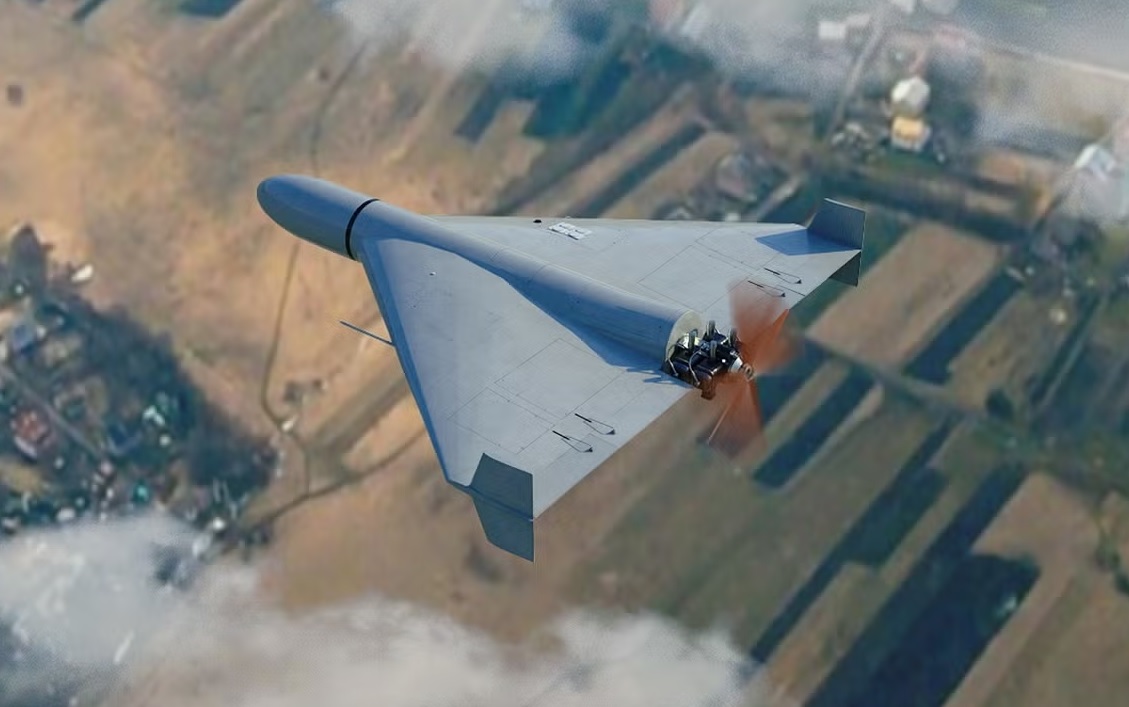 Renault To Produce Shahed-Style Attack Drones In France, Targeting 600 Units Per Month
Renault To Produce Shahed-Style Attack Drones In France, Targeting 600 Units Per Month
-
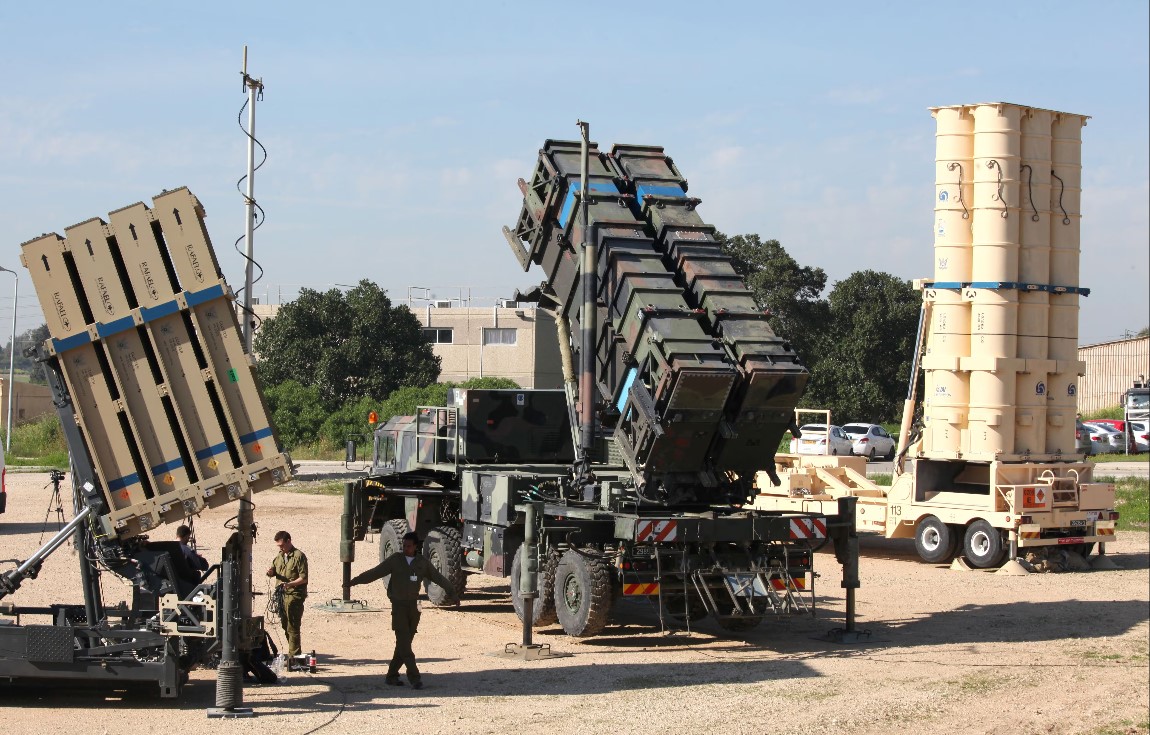 Israel Tells U.S. It Can Withstand 700-Missile Iranian Retaliation In Worst-Case Regime-Fall Scenario
Israel Tells U.S. It Can Withstand 700-Missile Iranian Retaliation In Worst-Case Regime-Fall Scenario
-
 UK, Germany, Netherlands and Sweden Plan to Join France in Rejecting U.S. Peace Council Invitation
UK, Germany, Netherlands and Sweden Plan to Join France in Rejecting U.S. Peace Council Invitation
-
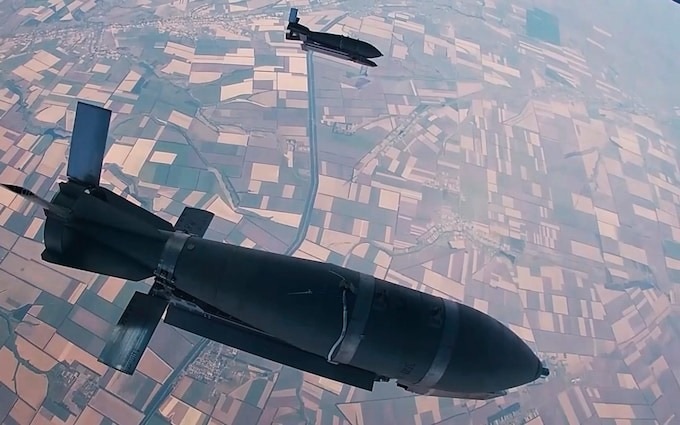 India’s Solar Group Attracts Overseas Inquiries for NATO- and Russian-Jet-Compatible 125 kg Air Bomb
India’s Solar Group Attracts Overseas Inquiries for NATO- and Russian-Jet-Compatible 125 kg Air Bomb
-
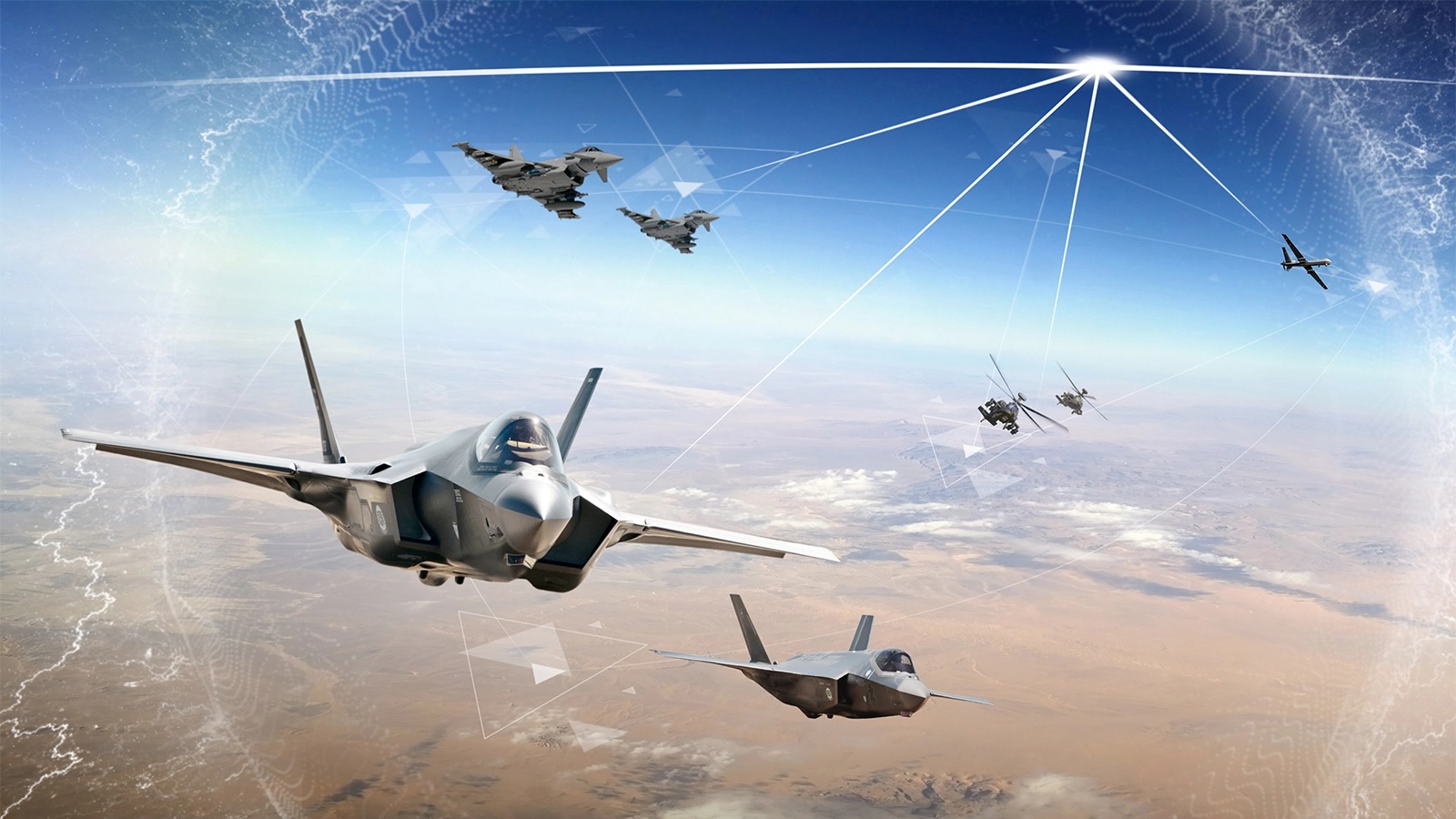 BAE Systems Unveils Next-Generation DIGAR to Shield Aircraft from GPS Jamming
BAE Systems Unveils Next-Generation DIGAR to Shield Aircraft from GPS Jamming
-
 Norway Warns Thousands of Citizens Their Homes and Vehicles May Be Seized in Event of War With Russia
Norway Warns Thousands of Citizens Their Homes and Vehicles May Be Seized in Event of War With Russia
-
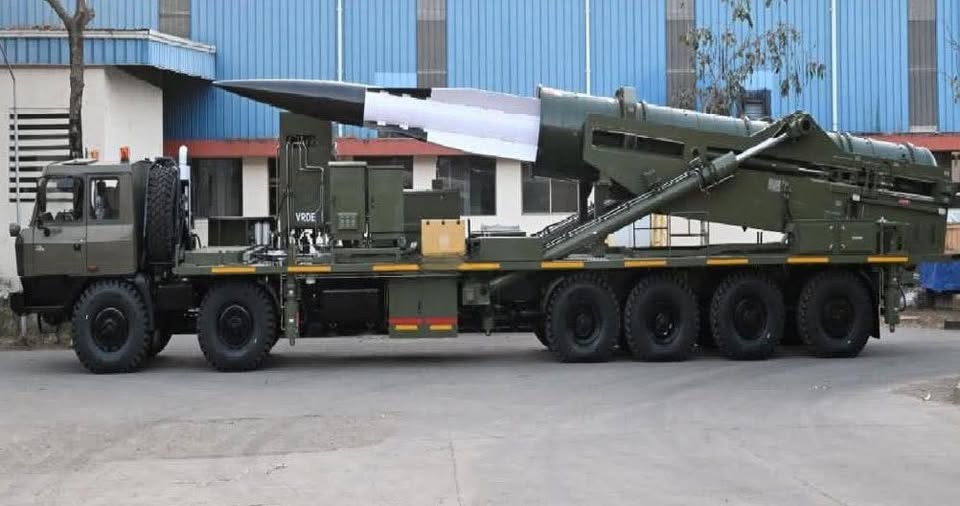 India Preparing to Unveil Hypersonic Anti-Ship Missile at Republic Day Parade 2026
India Preparing to Unveil Hypersonic Anti-Ship Missile at Republic Day Parade 2026
Top Trending in 4 Days
-
 Pentagon Places 1,500 Arctic-Trained Airborne Troops on Standby as Greenland Dispute Escalates
Pentagon Places 1,500 Arctic-Trained Airborne Troops on Standby as Greenland Dispute Escalates
-
 Over 200,000 Danish citizens Sign Petition to ‘Buy’ California From U.S After Greenland Dispute
Over 200,000 Danish citizens Sign Petition to ‘Buy’ California From U.S After Greenland Dispute
-
 China Secretly Delivers HQ-9B Air Defense Systems to Iran in Emergency Airlift Amid Strike Fears
China Secretly Delivers HQ-9B Air Defense Systems to Iran in Emergency Airlift Amid Strike Fears
-
 Iran Conducts Unprecedented High-Speed Missile Test With Rare Russia Coordination
Iran Conducts Unprecedented High-Speed Missile Test With Rare Russia Coordination
-
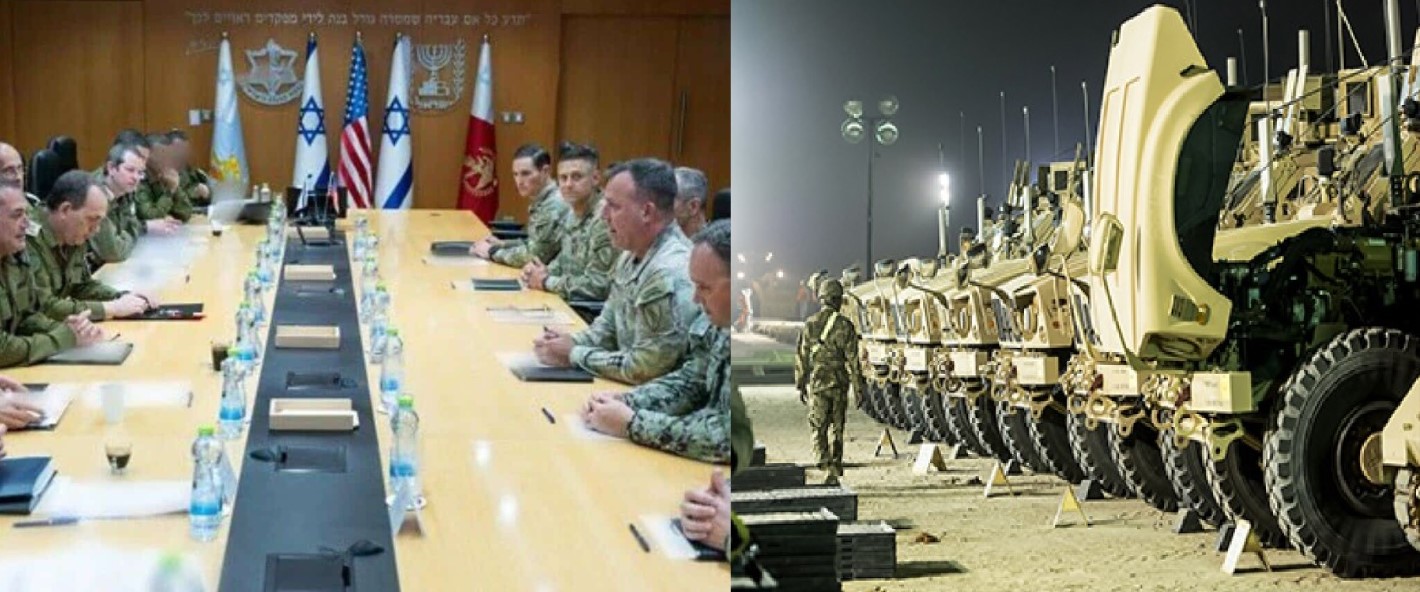 U.S. Quietly Prepares for Iran War Scenario as CENTCOM Shifts to 24/7 Readiness
U.S. Quietly Prepares for Iran War Scenario as CENTCOM Shifts to 24/7 Readiness
-
 Finland Successfully Transmits Electricity Through Air Using Sound and Laser Beams
Finland Successfully Transmits Electricity Through Air Using Sound and Laser Beams
-
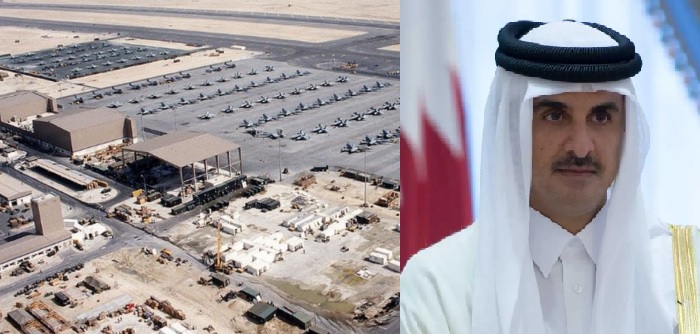 Qatar Warns U.S Over Al-Udeid Base: ‘You Are a Tenant, Not the Owner’
Qatar Warns U.S Over Al-Udeid Base: ‘You Are a Tenant, Not the Owner’
-
 Denmark Alarmed After Report Says U.S. Quietly Sought Sensitive Military-Use Data on Greenland
Denmark Alarmed After Report Says U.S. Quietly Sought Sensitive Military-Use Data on Greenland


